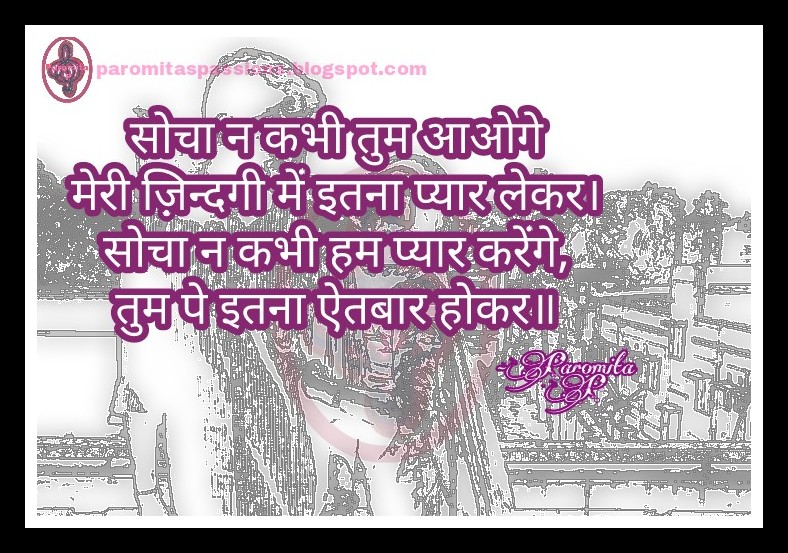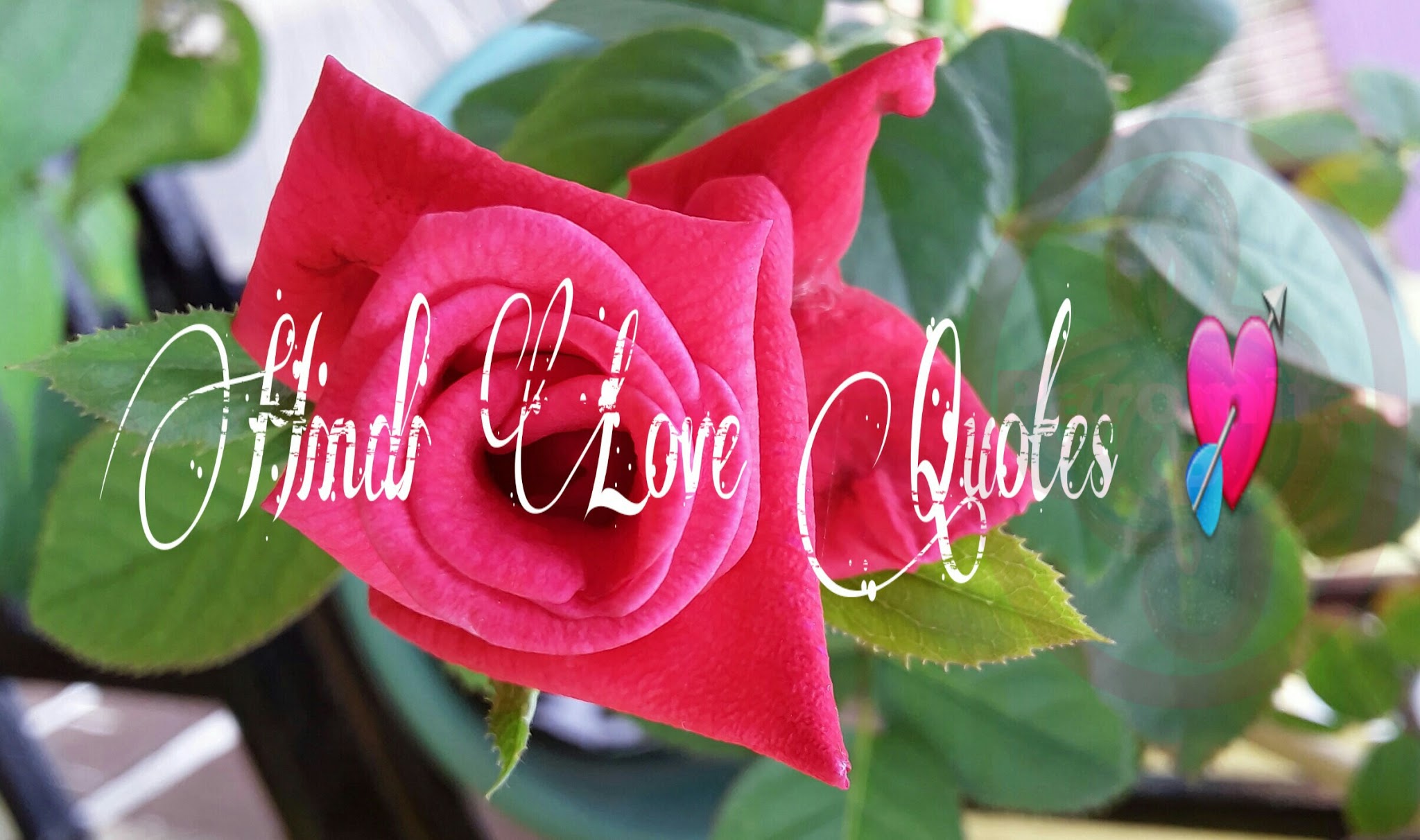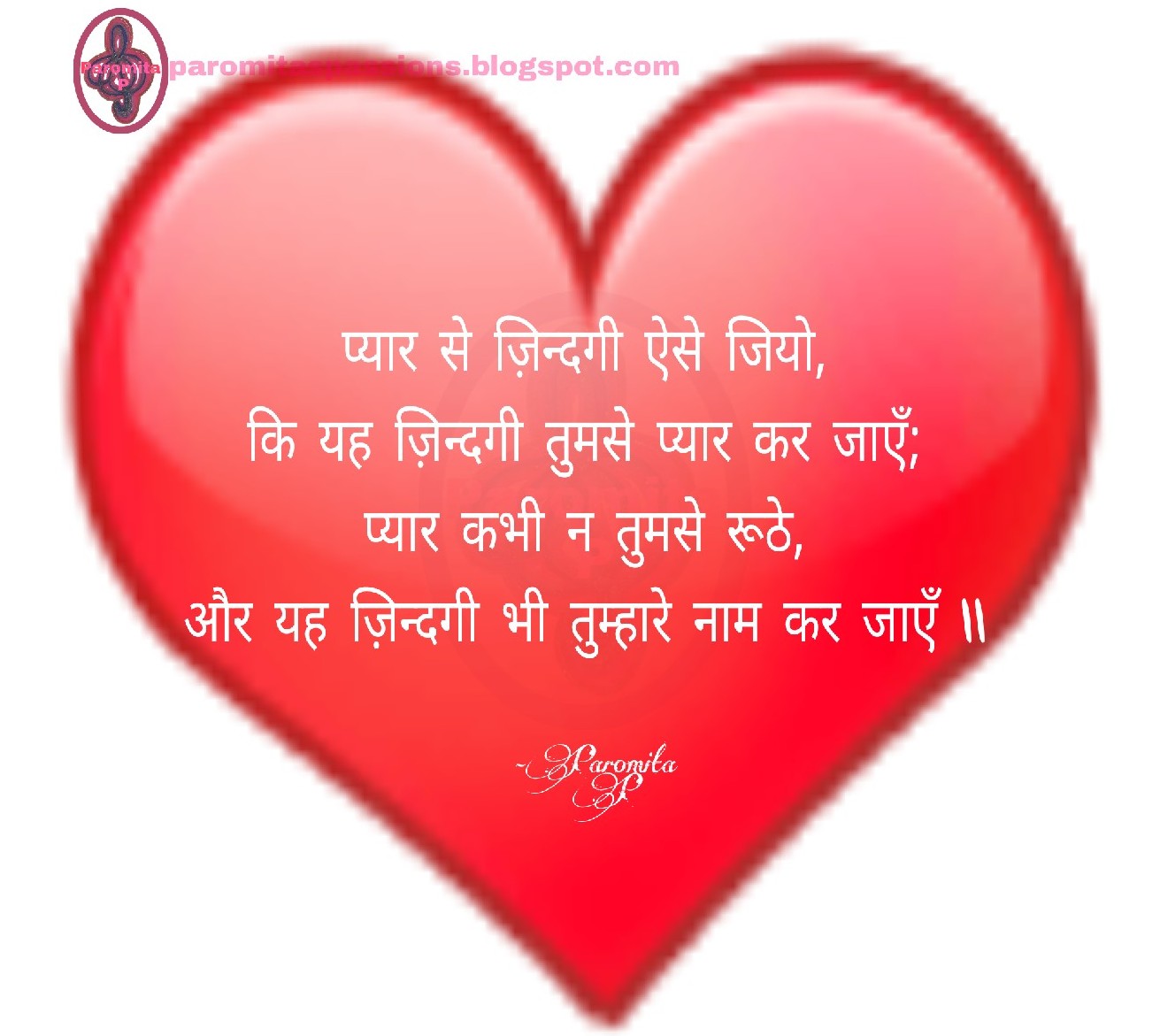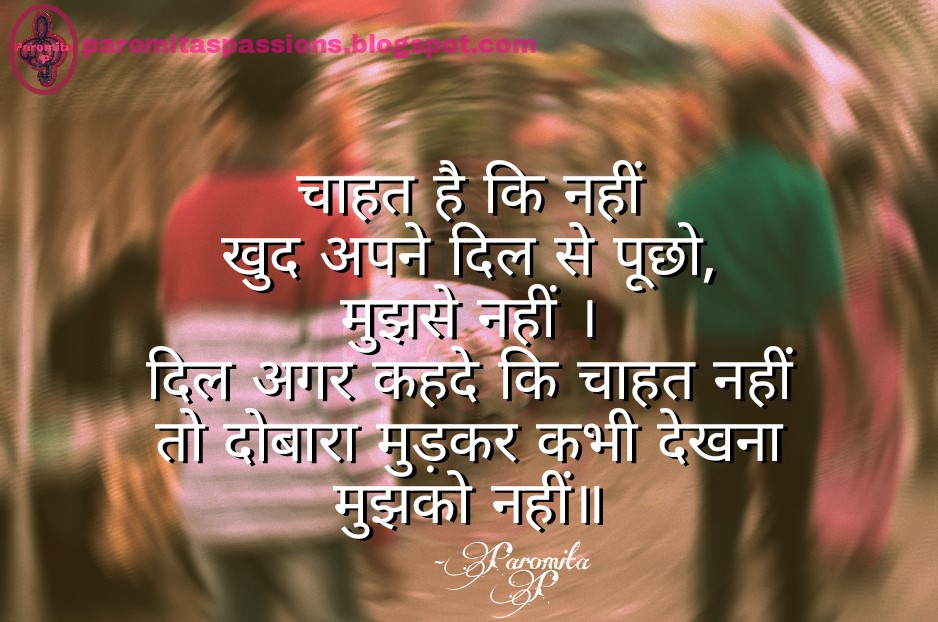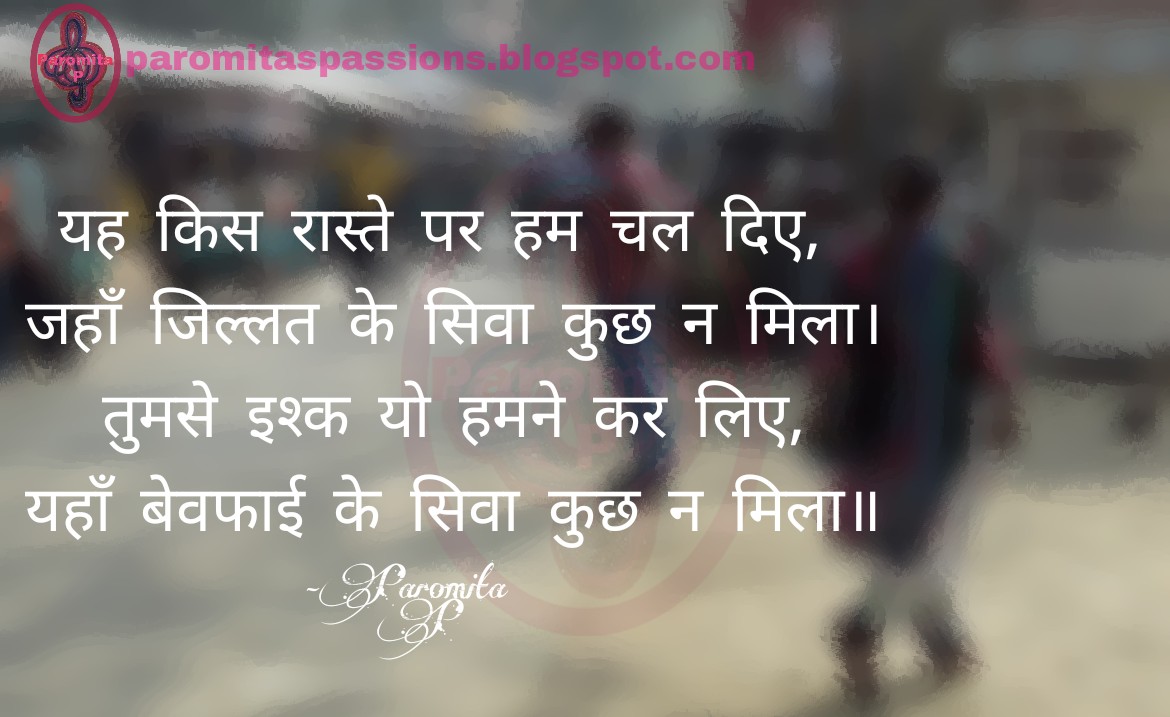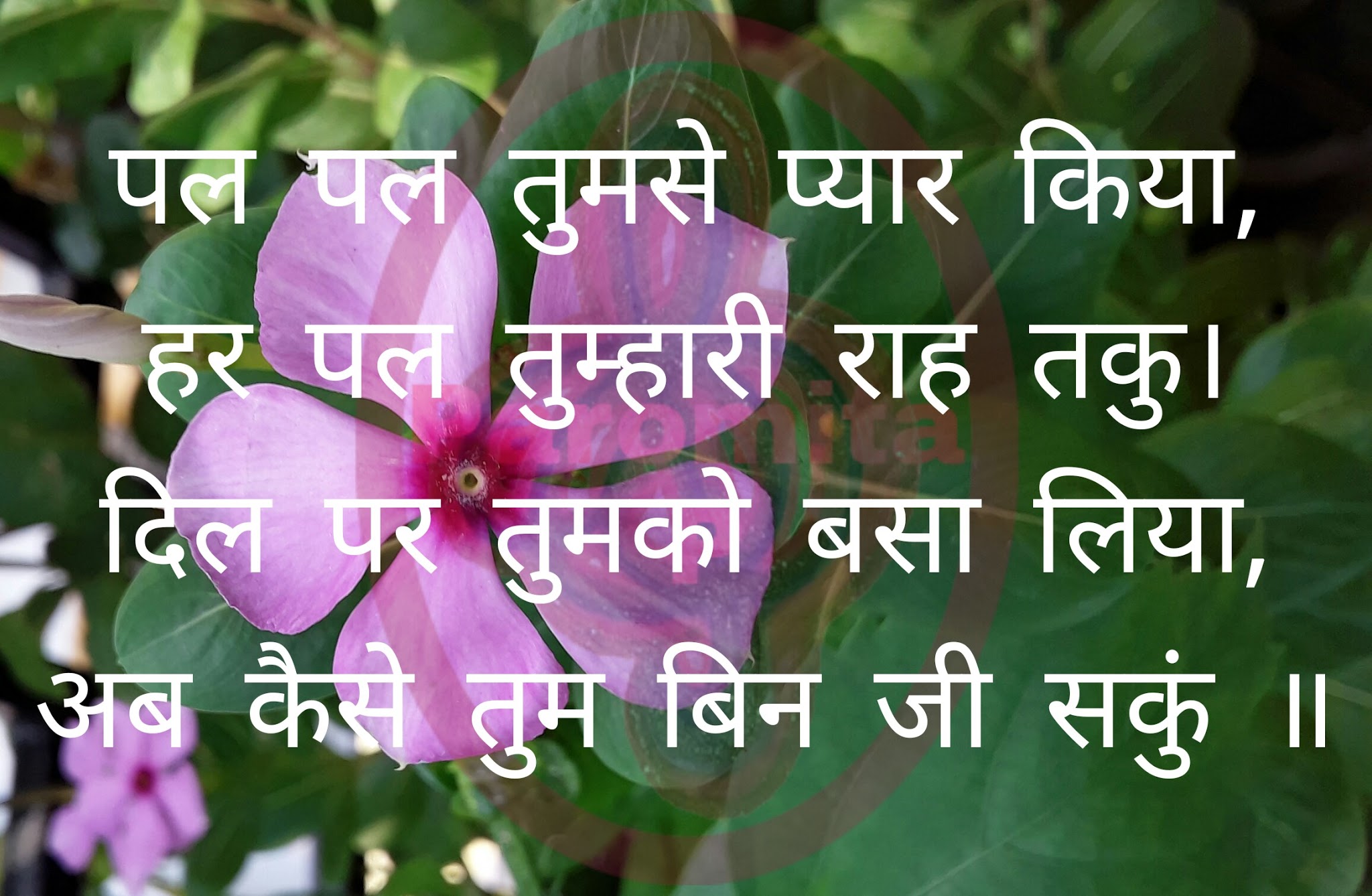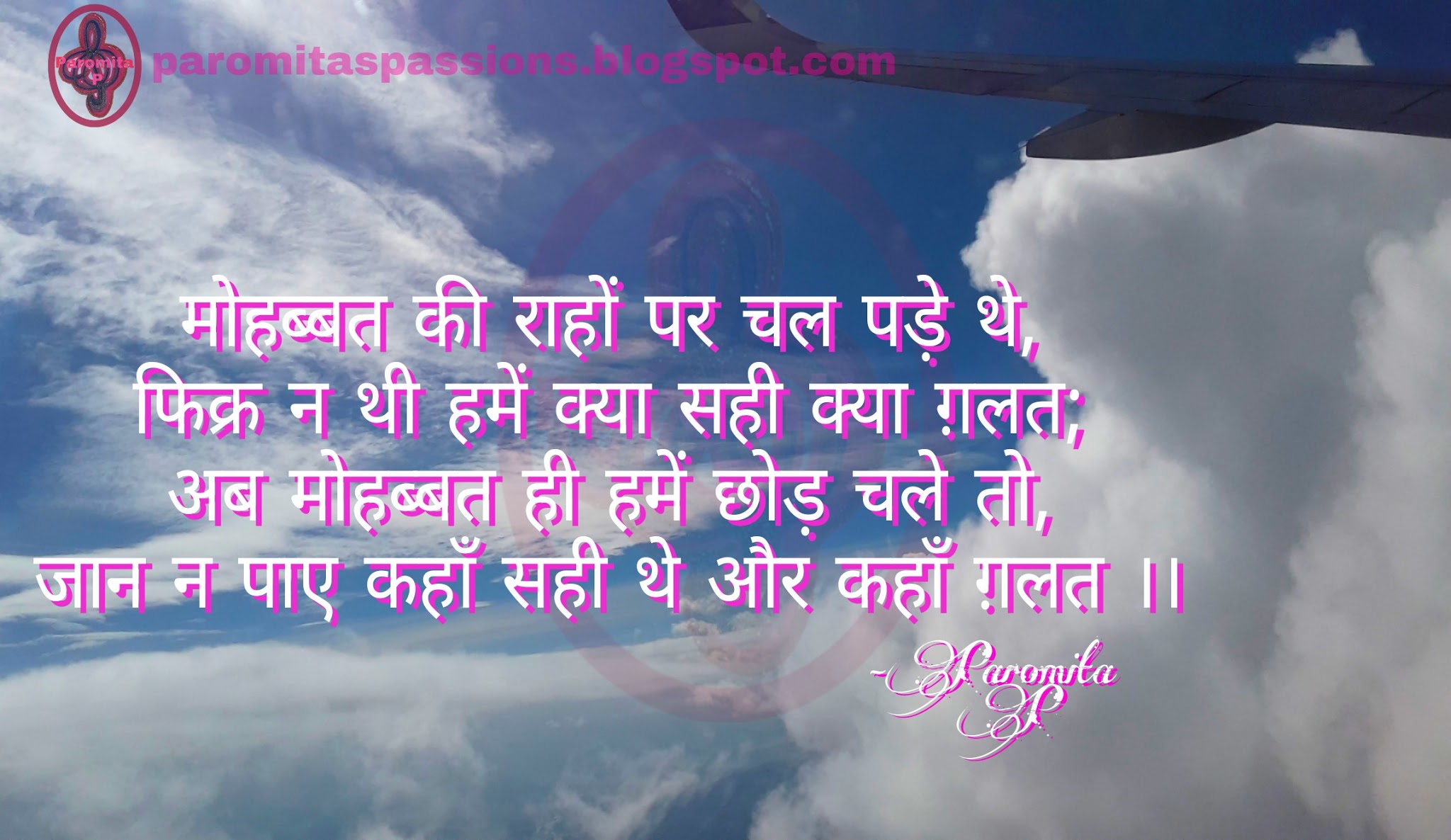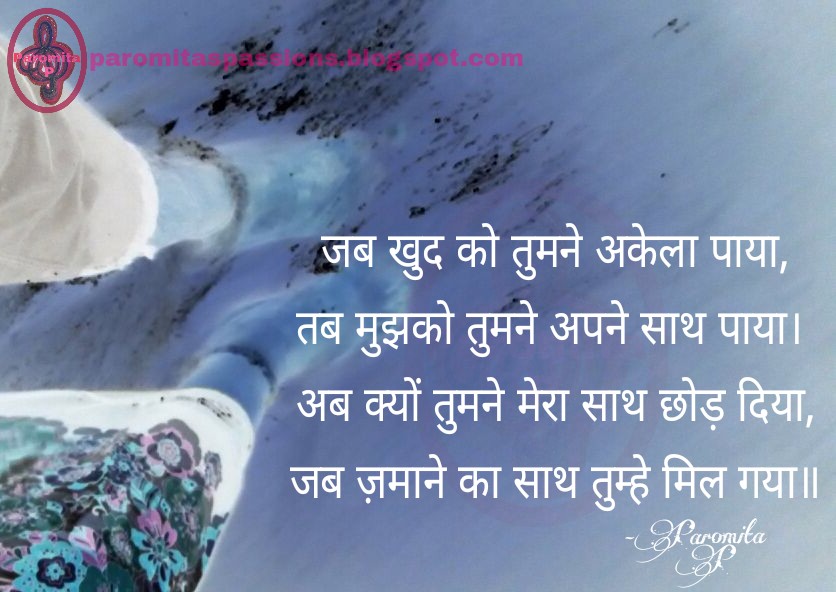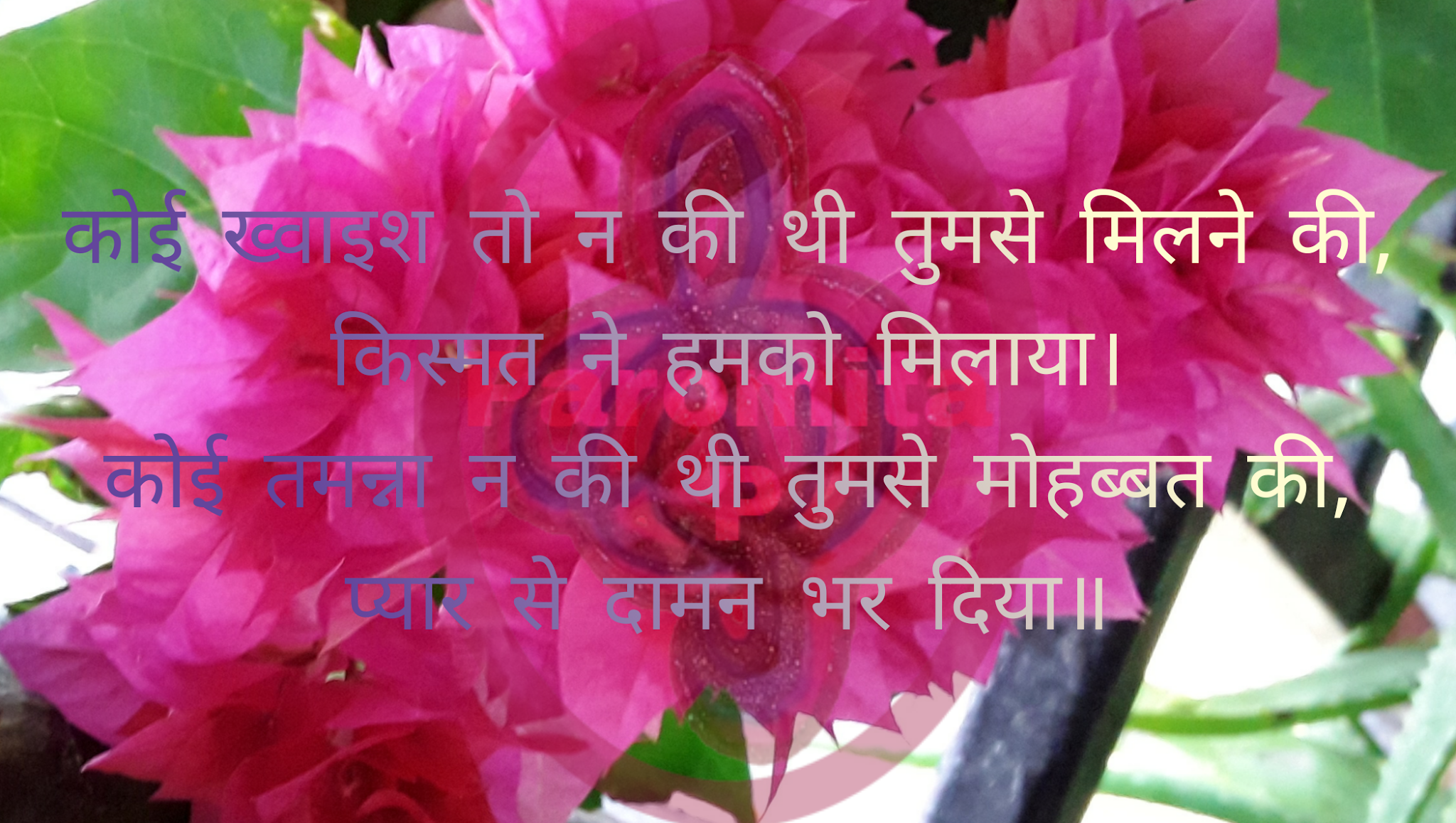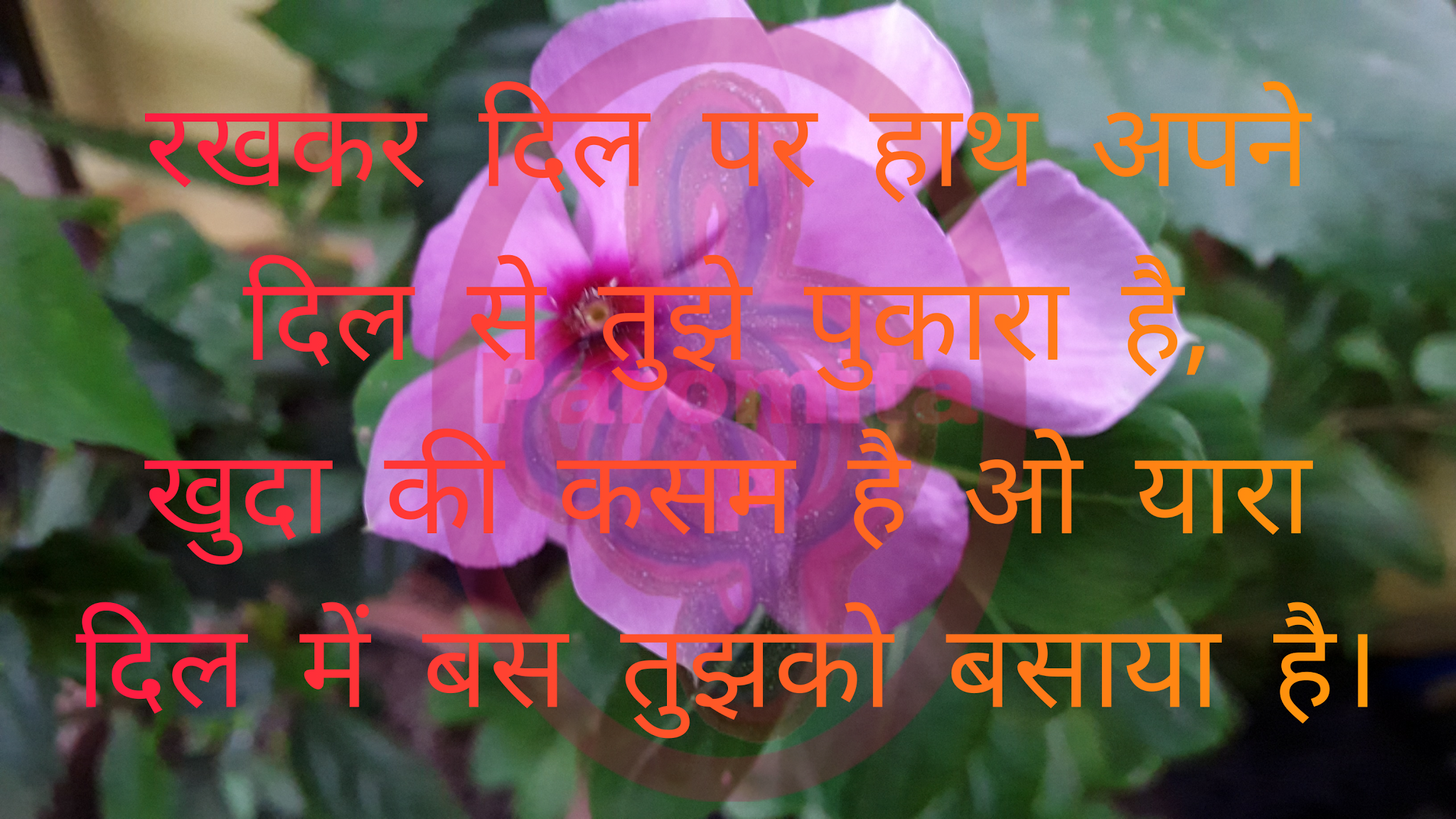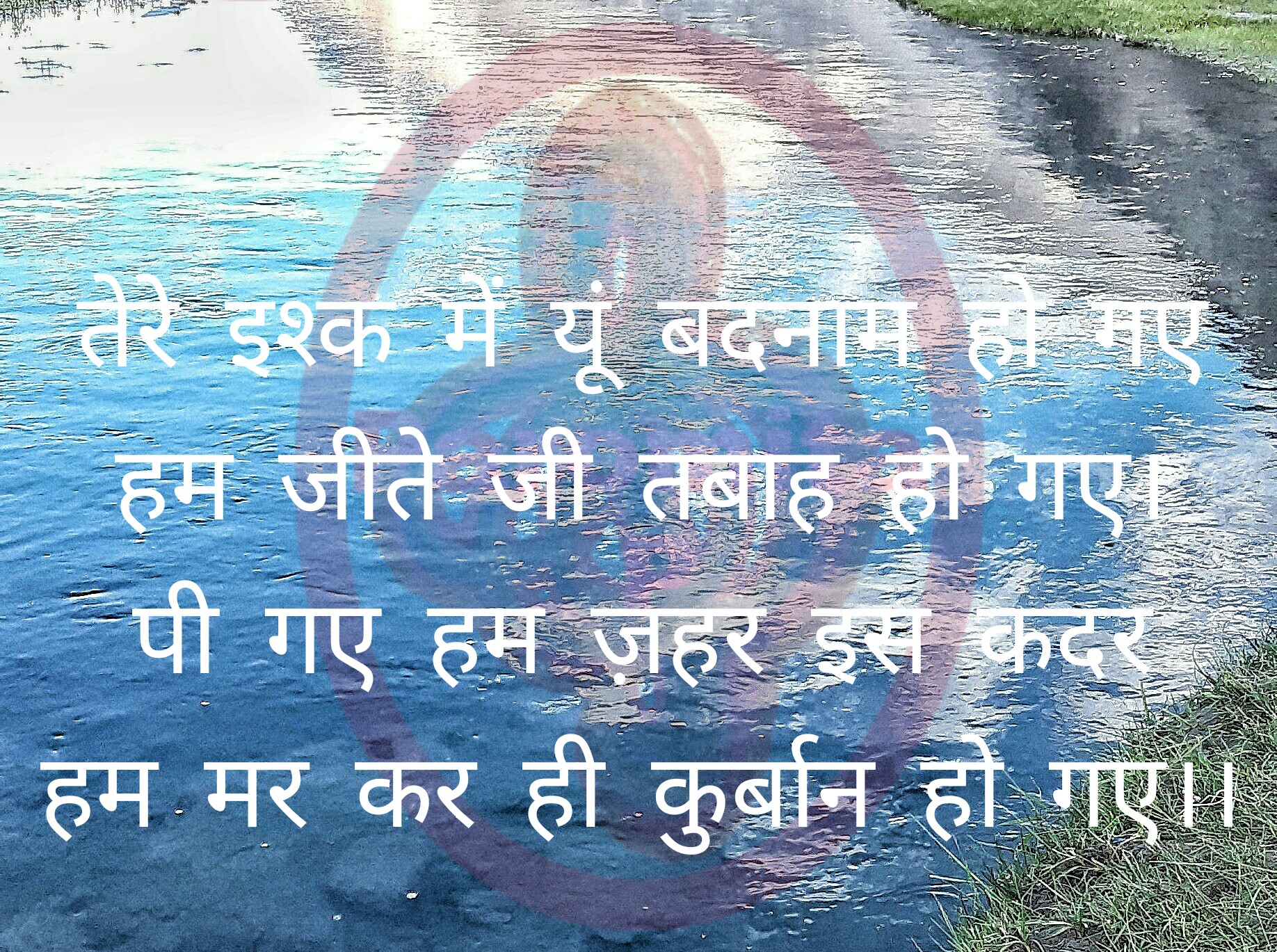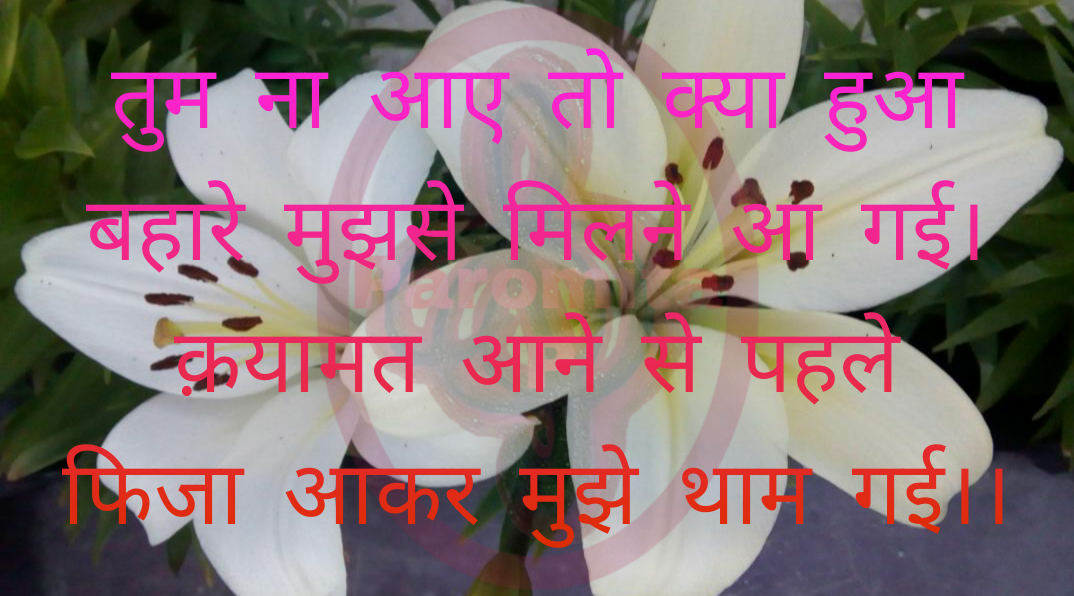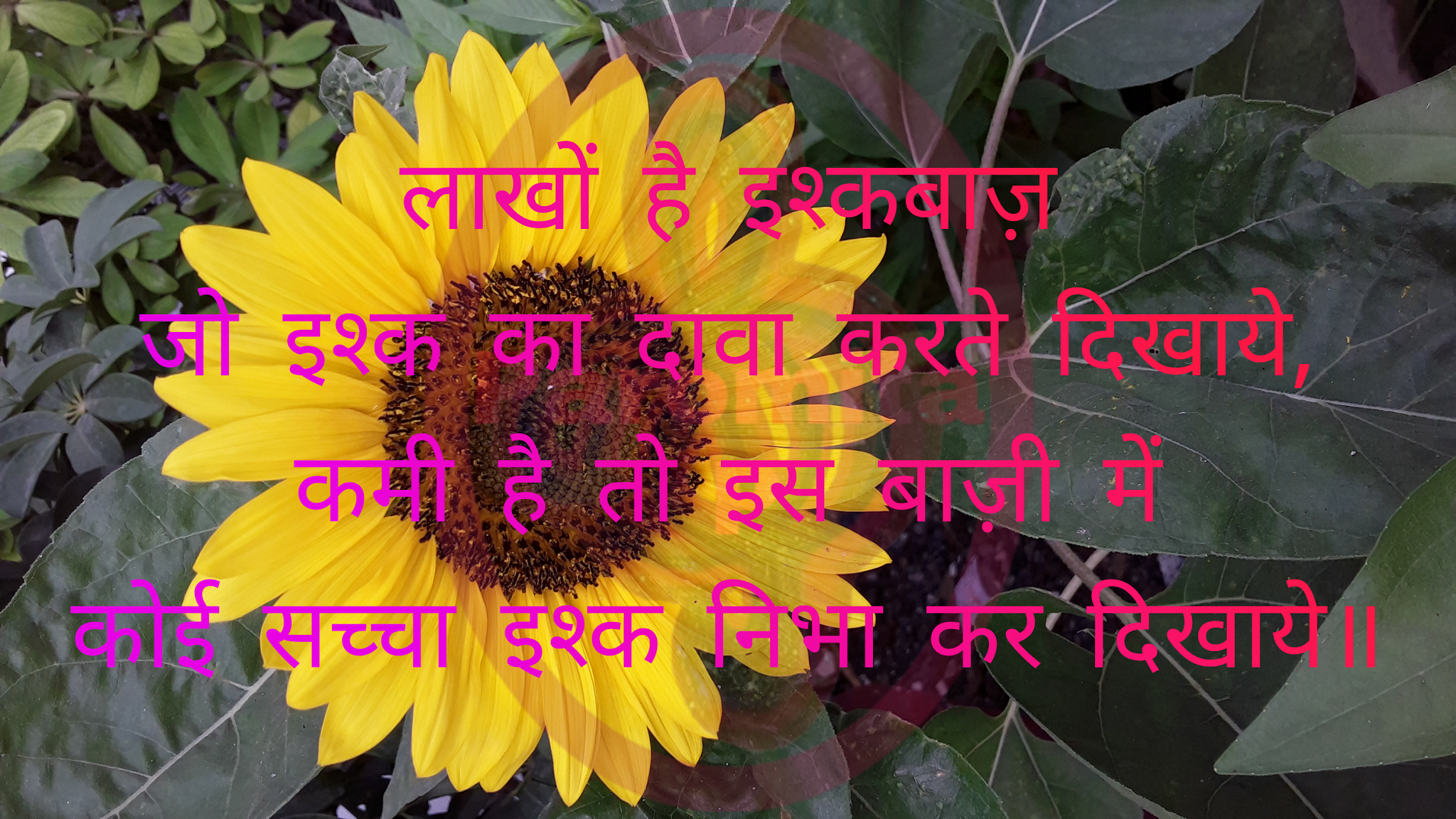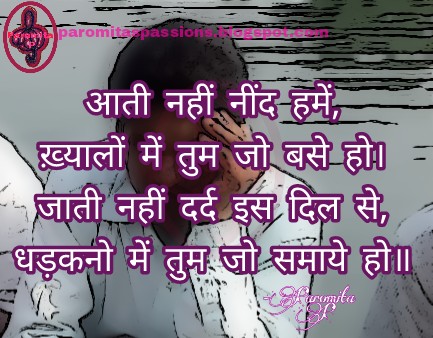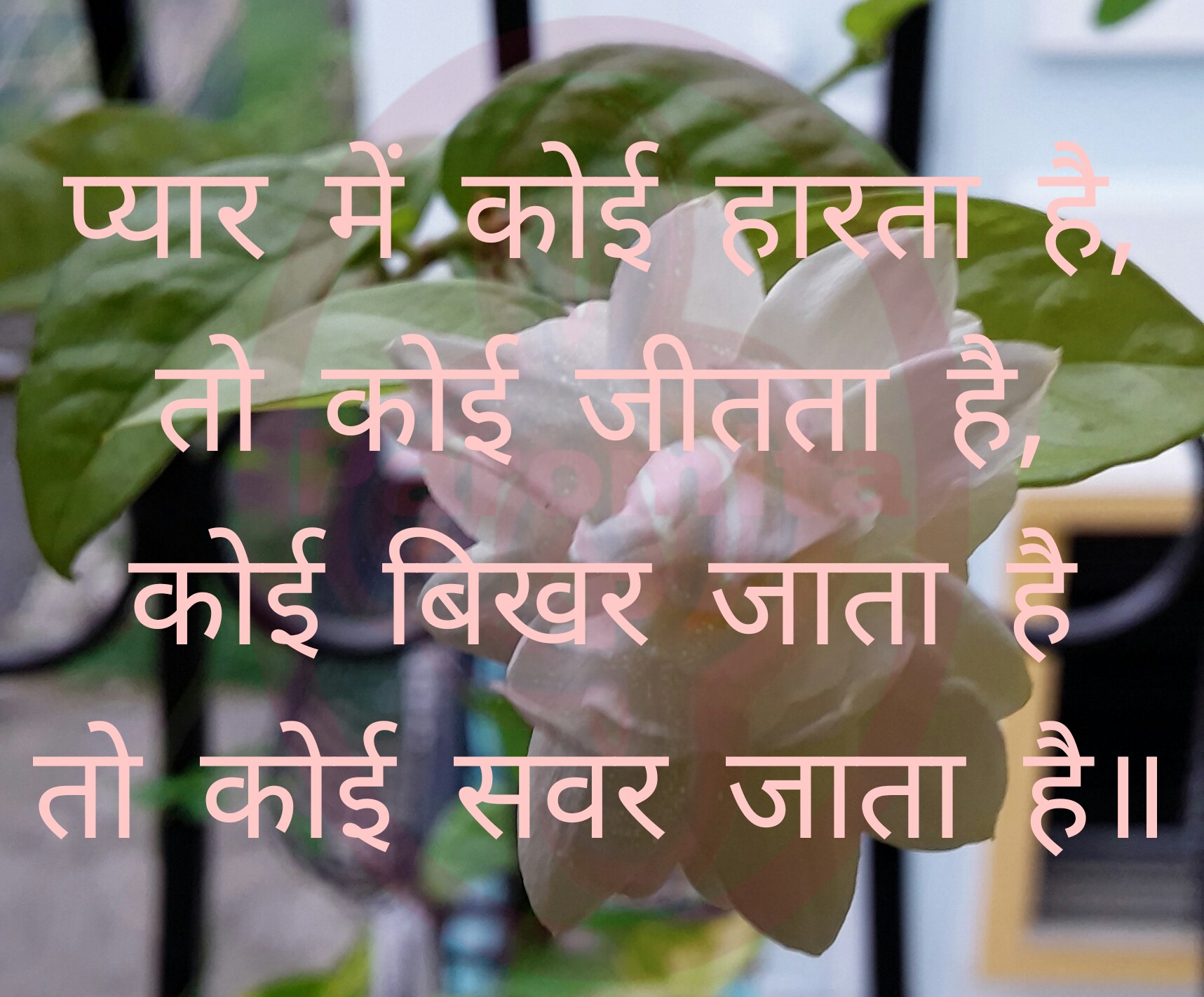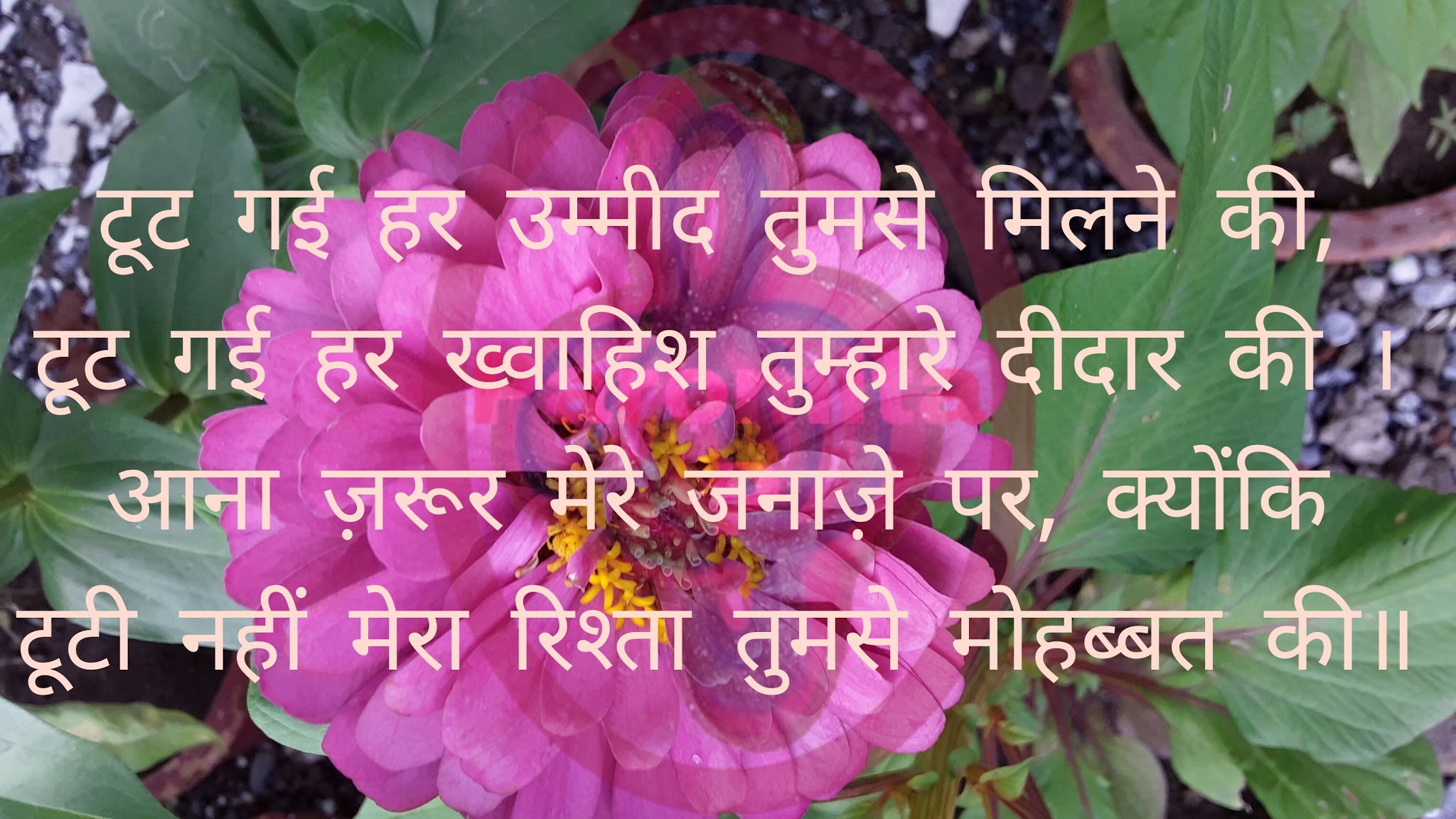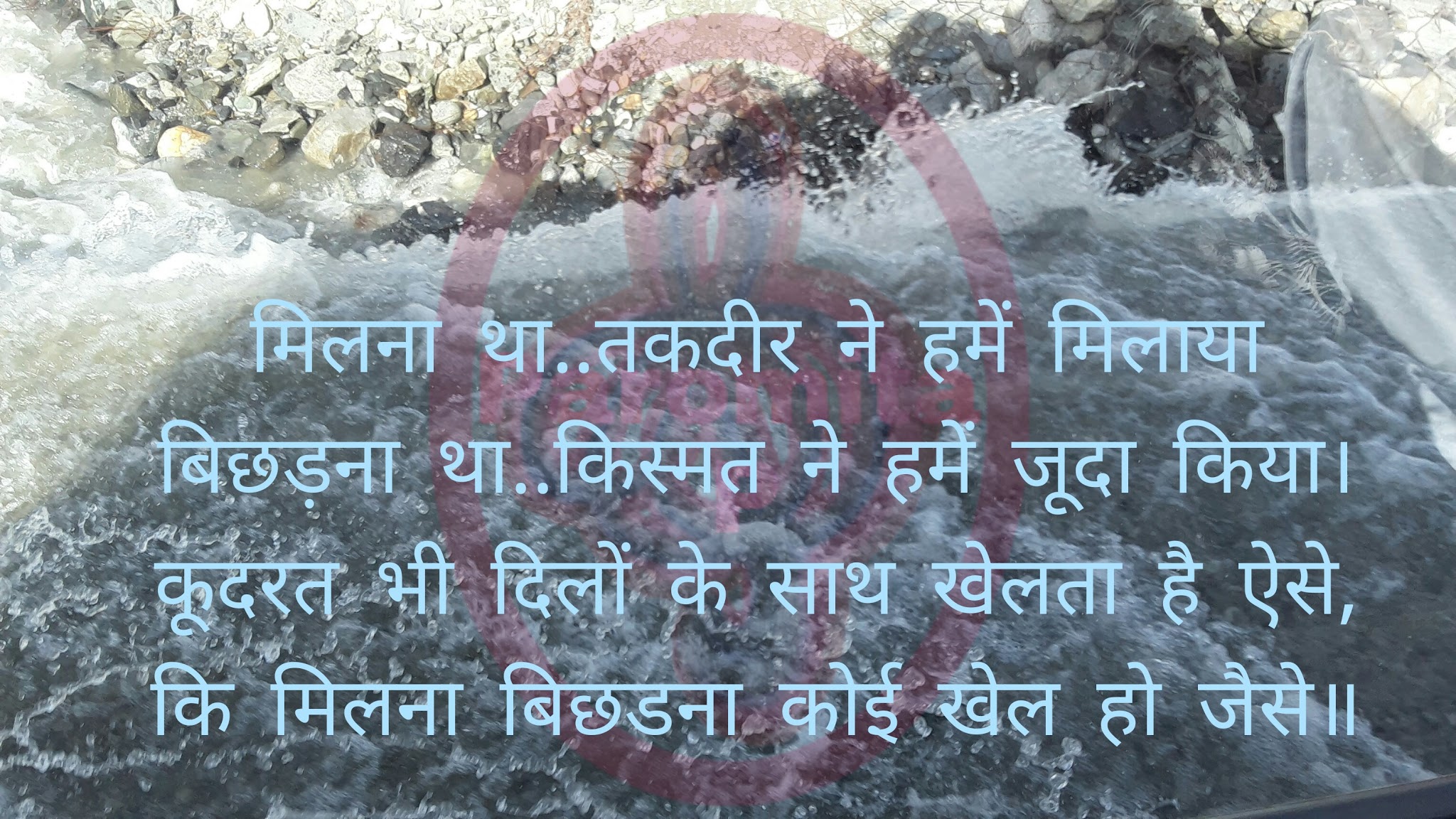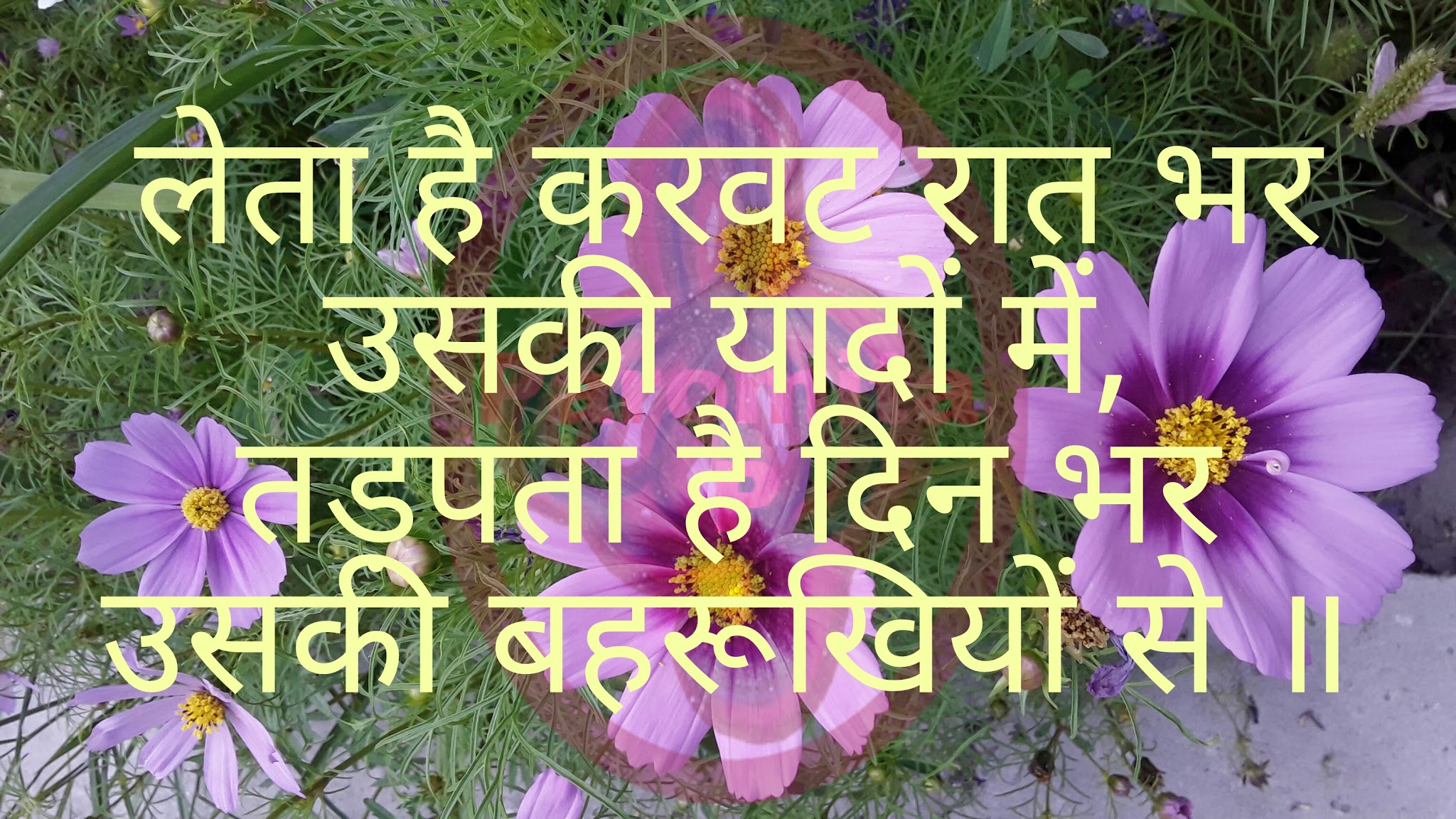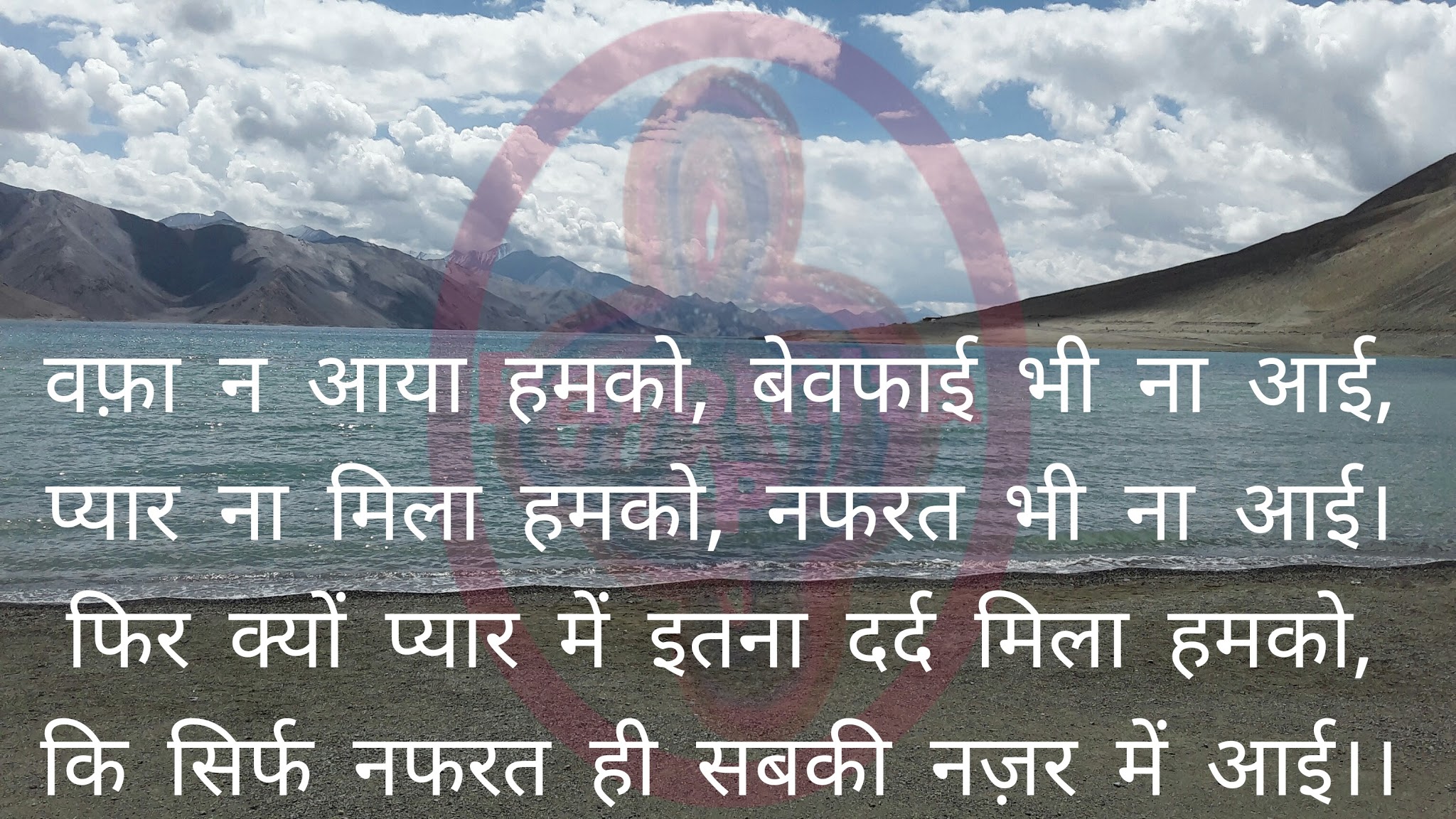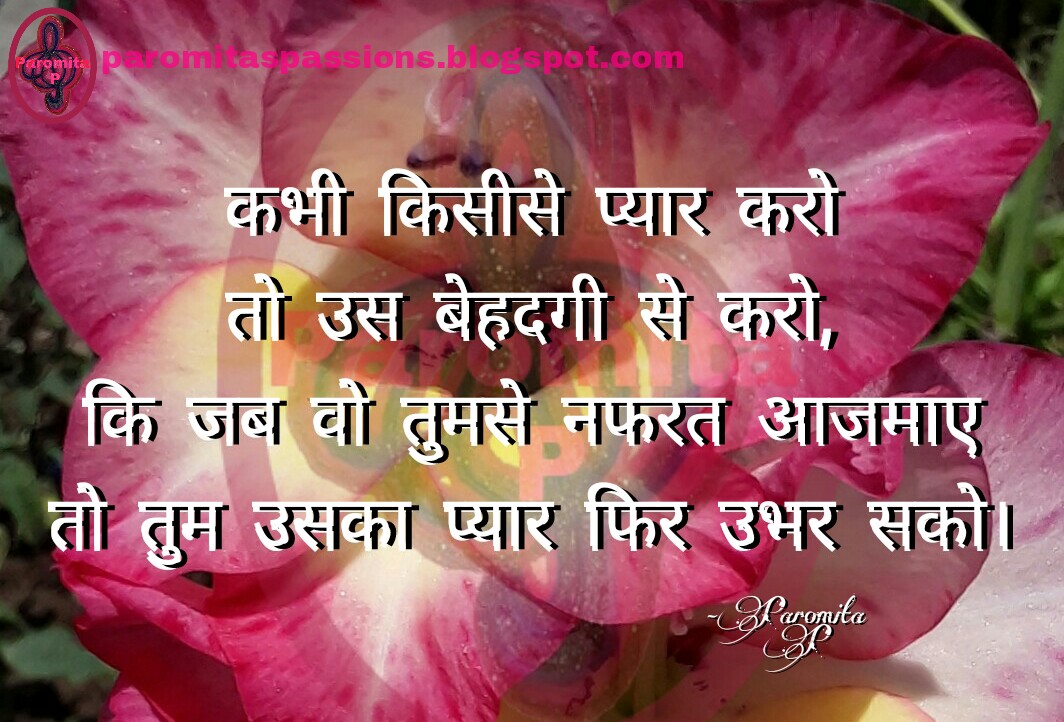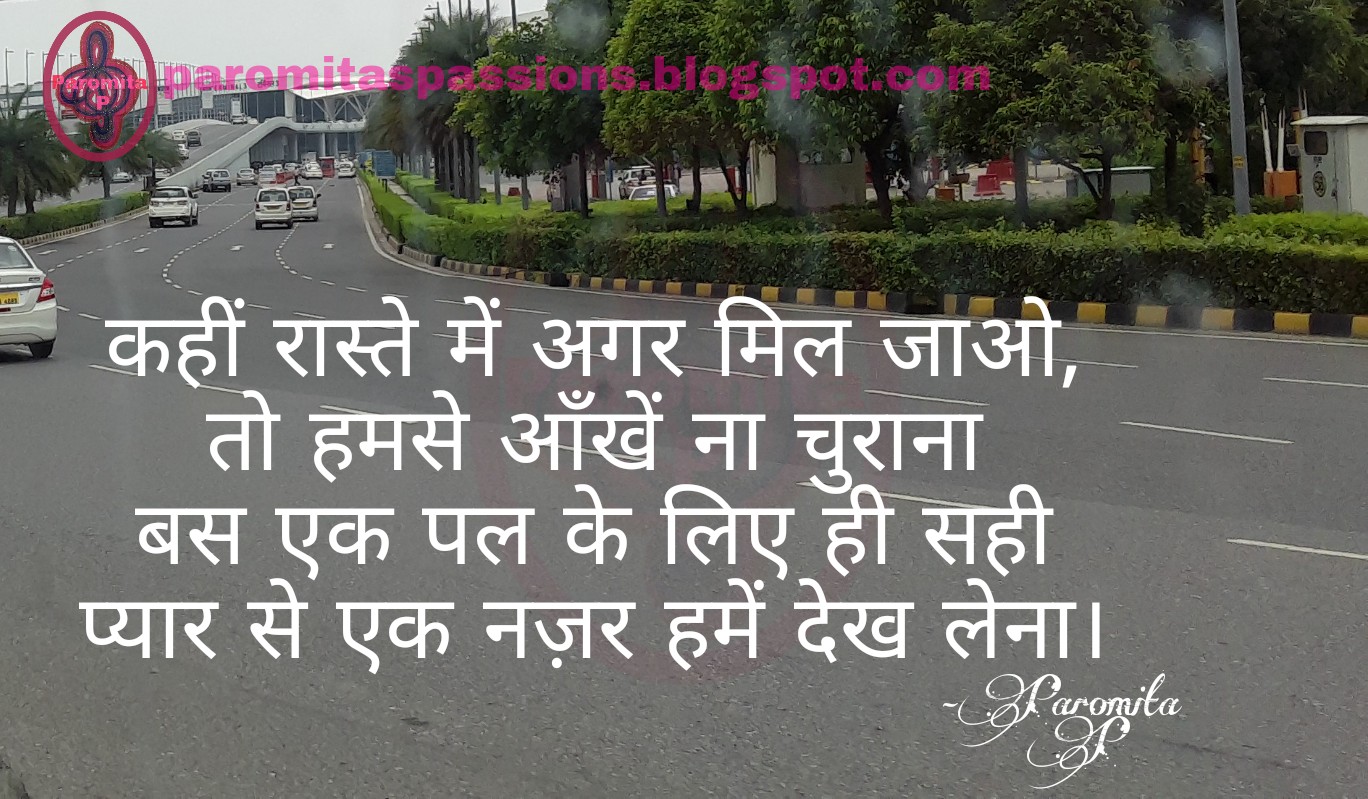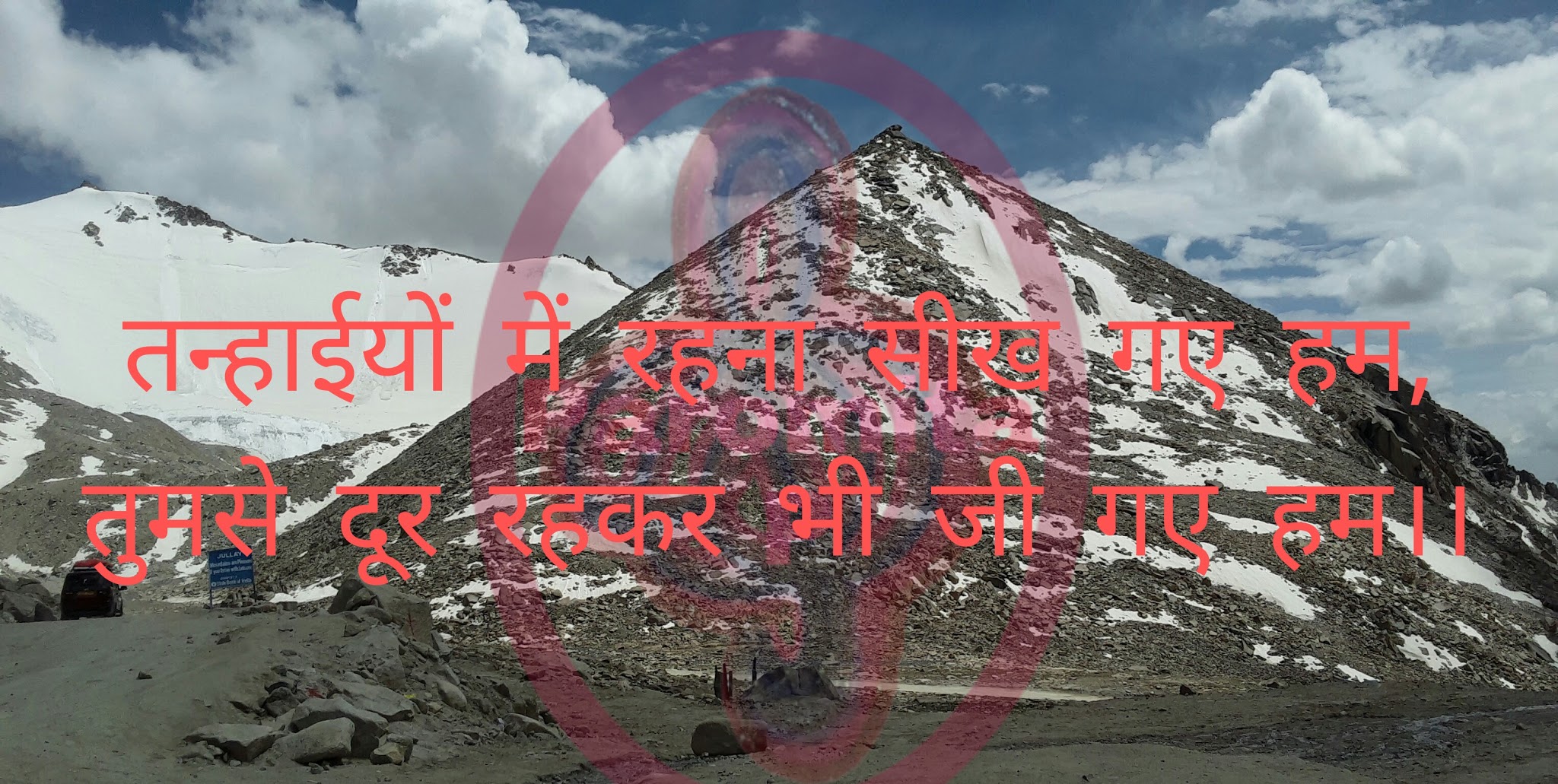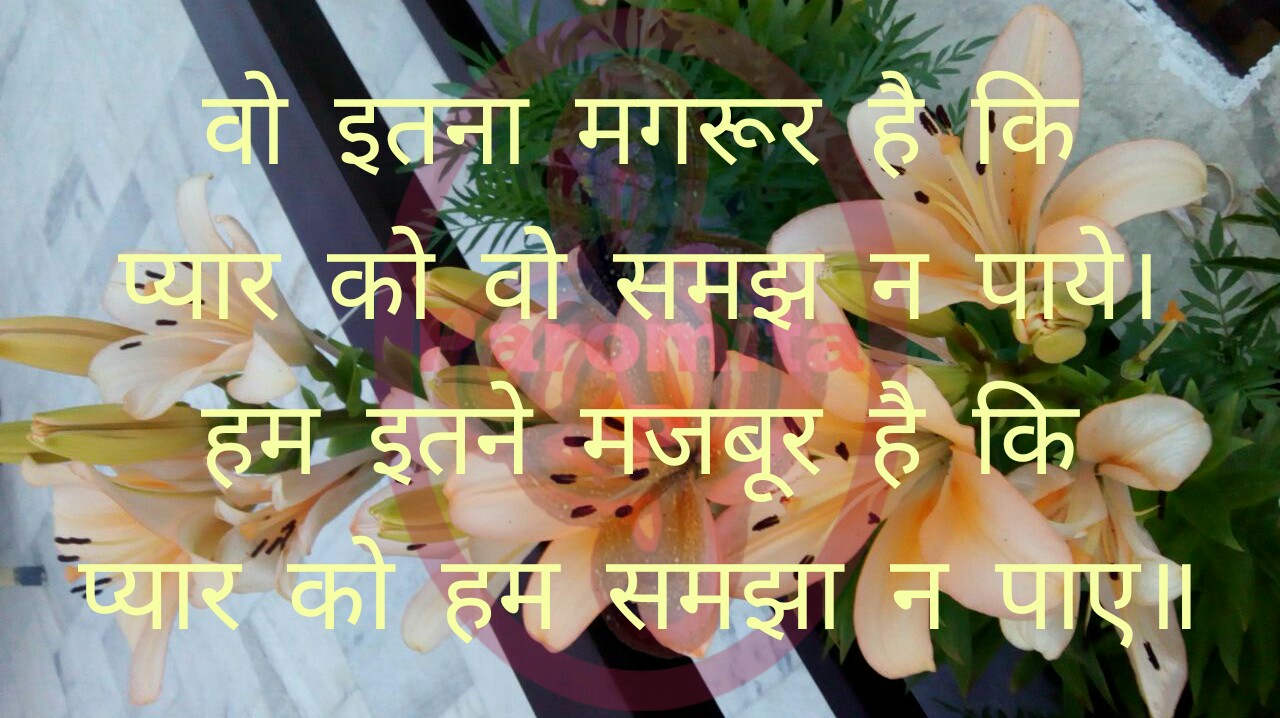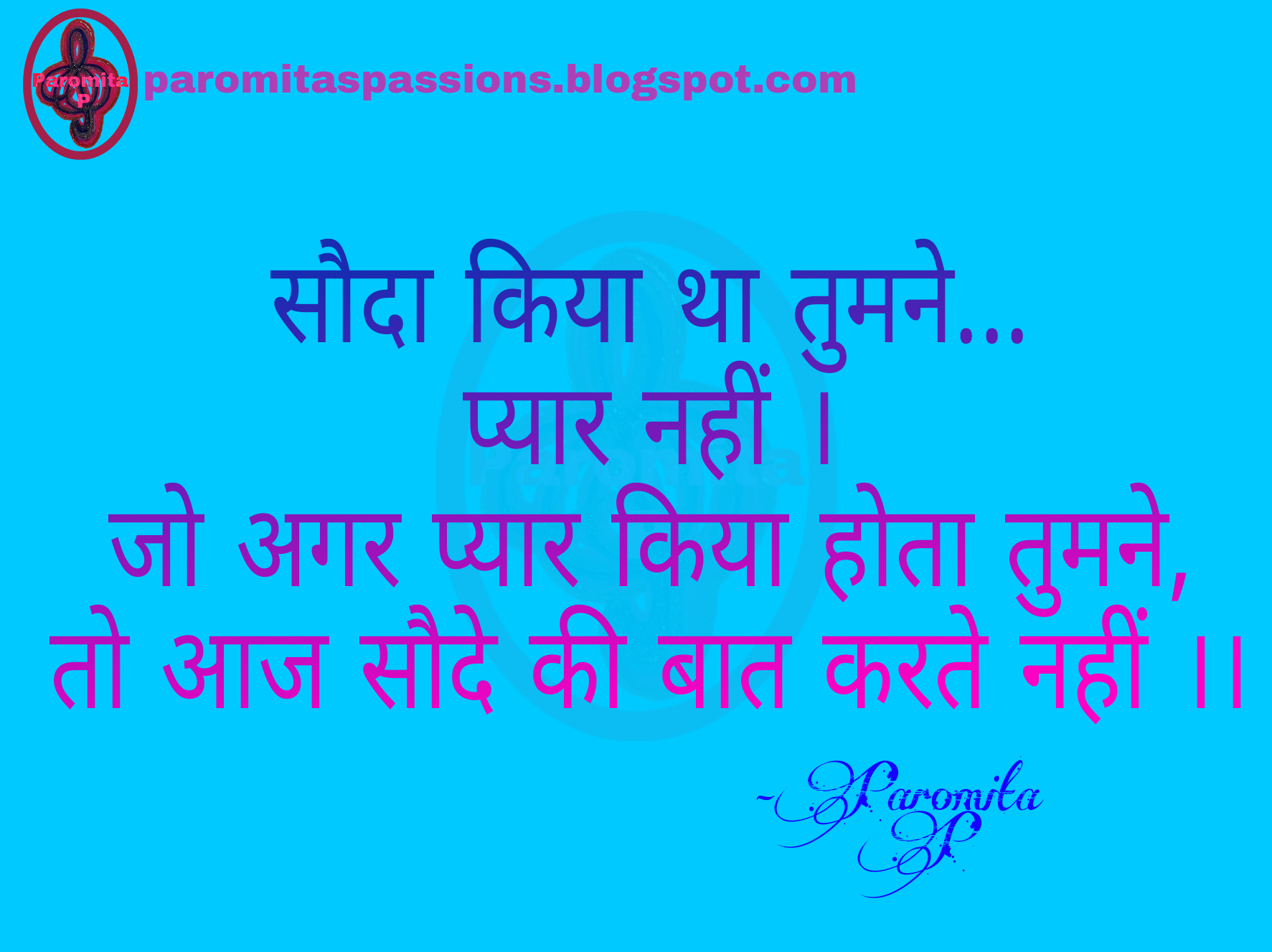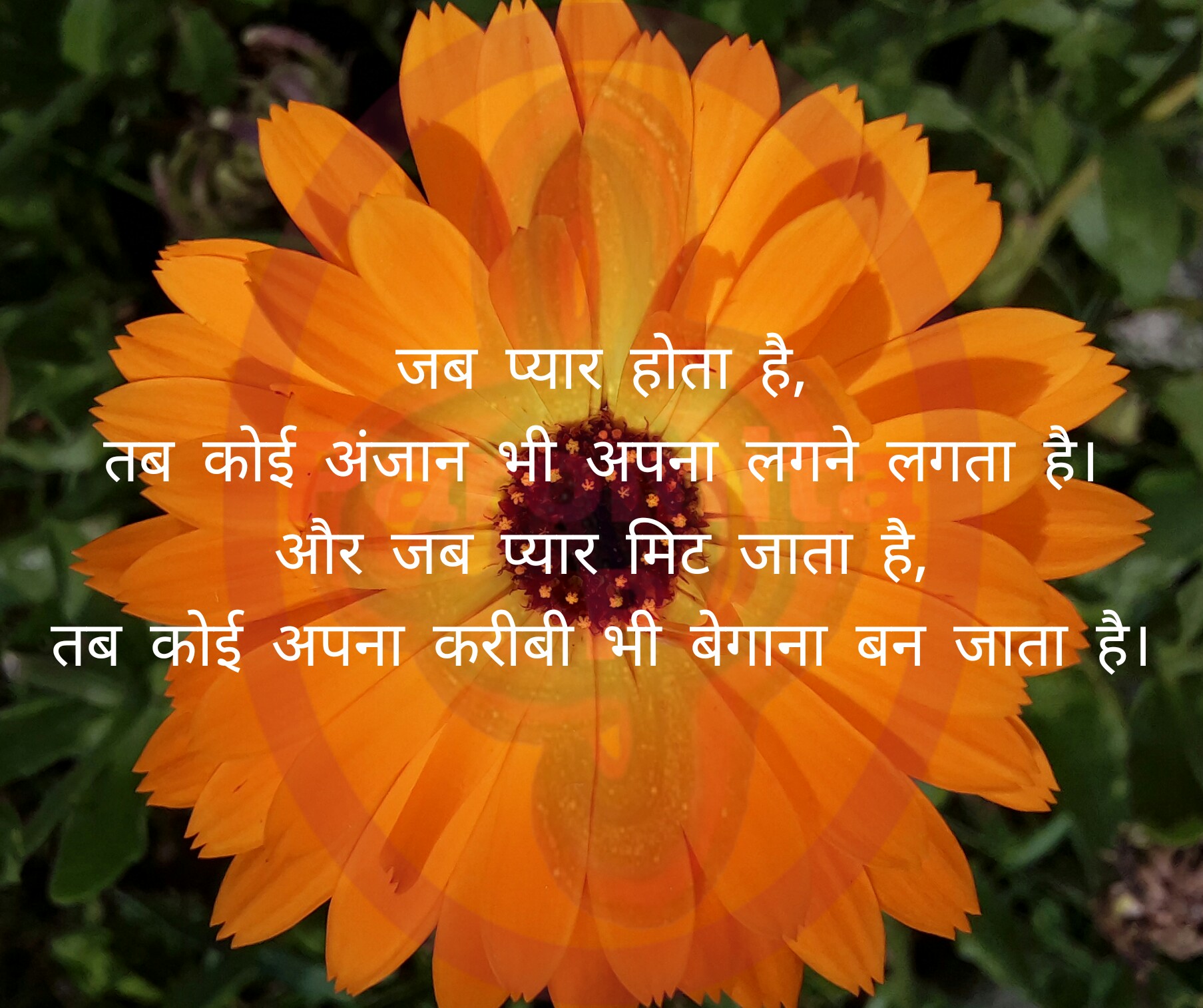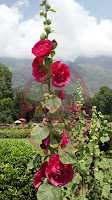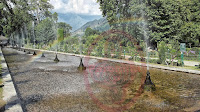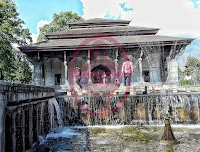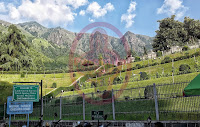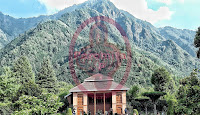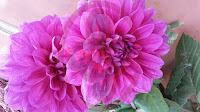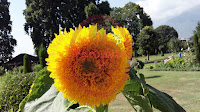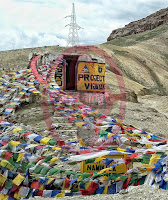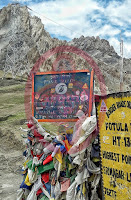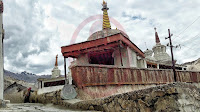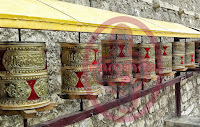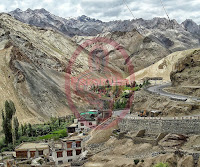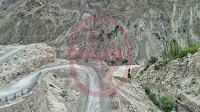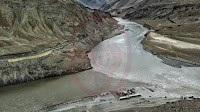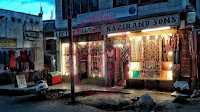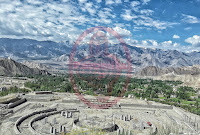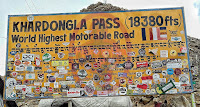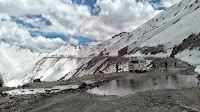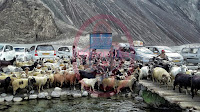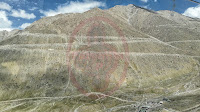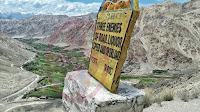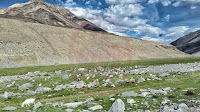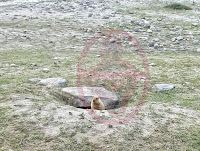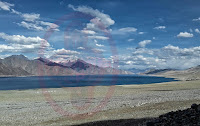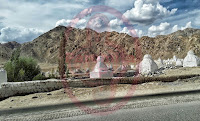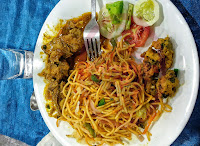A Traveler’s diary has always some stories to tell. Travelling
is a life-changing experience. Every traveler is a Story-teller from his own perspective. The Journey of My 12 days in Jammu and Kashmir
is an unforgettable event of my life. I want to share the moments with this
story that I’ve experienced on my trip to J&K.
Jammu and Kashmir is
famous for the mountains, hills, pine trees, conifers, deodars, snow-capped
mountains and ice-skiing in the winters, glaciers, Pashmina shawls, rivers and
lakes, trekking, horse-riding, holy shrines, Kashmiri-cuisine, flower and fruit
gardens, military based camps and offices, wooden carved architecture, movie
shooting locations, histories, museums, monuments, monasteries, people of myriad kinds and
many more.
It was the month of July when we experience too much of
perspiration and humid weather as we reside in the city very close to the sea.
But I was super excited about my upcoming trip to Kashmir by the next week. It
was just 5 days to go and all of us started to plan and pack our luggage. We also packed our cameras, OTG pen drives, some quick snacks like biscuits,
chips, and mainly chocolates because chocolates are good for the Heart and for
breathing in the high altitude. We also double checked taking our flight
tickets, ID cards, and the travel plan.
I love wandering
because it gives me a sense of freedom to get away from the normal life. I get
to know new places, people, culture, and
food. I’m actually a foodie- traveler, who loves food alongside the traveling moments. I absolutely love going to
the hill station and the mountains, and I was eagerly waiting for the day to
arrive, to experience the flavor, taste, food
extravaganza and of course the landscapes of J&K.
And the day arrived,
we started early morning 4:30 am for the Airport. Our flight was at 7 am, it was via a flight from the capital city.
Flight to Jammu was at 2:30 pm in the afternoon. We reached Jammu around 4 pm.
The cab agency was there to receive us, we got into the cab and I was ready
with my camera to start clicking. I am going to
put some of my favorite pictures from my journey. They say that you can never
get a bad shot in the mountains.
Day 1: JAMMU
We started driving on the long-stretched routes along the
mountain ends and river banks. There were many religious holy places such as
Temples, Mosques, also Gurudwaras. The Jammu road towards Katra falls on the
National Highway 1A, where the majestic River Chenab flowing in red-muddy color
towards my right and mountain rocks on my left. I’ve always loved this sort of
long stretched routes and we were going closer and closer to that mountain
where the Mother God (Mata Rani) resides.
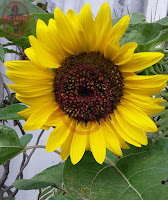 We reached the Asia hotel where we were going to spend the next
two nights. As I entered the heavenly place of Jammu and Kashmir, first things
that fell into my sight were mountains, rivers, and beautiful glowing flowers.
The flowers were so beautiful that I began clicking on all of them. The flowers are bigger than the size of my fist and
even my own face. I was spellbound at the very first glimpse of this beautiful
place and its natural beauty.
We took some time to get fresh and then the
hotel provided cab,
we went to book our entry tickets to the ‘Vaishno Devi Temple’. The place was
very nearby to our hotel, so it took about 15 minutes to and fro, and also the
ticket counter was not crowded at that time. We came back to the hotel, had our
meals, took a quick nap. We then started walking up on the mountain to visit
the Holy Shrine to offer our prayers and
wishes to the Deity (Mother God).
We reached the Asia hotel where we were going to spend the next
two nights. As I entered the heavenly place of Jammu and Kashmir, first things
that fell into my sight were mountains, rivers, and beautiful glowing flowers.
The flowers were so beautiful that I began clicking on all of them. The flowers are bigger than the size of my fist and
even my own face. I was spellbound at the very first glimpse of this beautiful
place and its natural beauty.
We took some time to get fresh and then the
hotel provided cab,
we went to book our entry tickets to the ‘Vaishno Devi Temple’. The place was
very nearby to our hotel, so it took about 15 minutes to and fro, and also the
ticket counter was not crowded at that time. We came back to the hotel, had our
meals, took a quick nap. We then started walking up on the mountain to visit
the Holy Shrine to offer our prayers and
wishes to the Deity (Mother God).
Day 2: KATRA
We along with the other devotees climbed up high on the mountain
to seek the blessing of the Goddess. It was a distance of approximately 16 km. That morning
we reached the sacred place and got the darshan of Mata Rani. While getting
down the mountains we took the pony ride, as we had terrible leg aches. The afternoon we spend some nap time in the hotel, the
evening we went to the market in Katra, it was just 10 minutes away from our
hotel, however, the hotel provided a cab for our pick and drop. The food was amazingly delightful and good for the
appetite, the stay was comfortable. Katra is strictly a vegetarian place as
it’s the divine place; the markets and
their services are open for 24 hours.
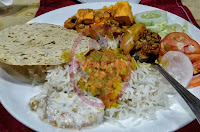 The hotel served dinner from 8 pm and the food came down as a
heavenly bliss to us. After the journey of the whole day, even though light
snacks accompanied us, but the whole meal was actually a gift from an Angel.
The plate included my favorite Matar
paneer, aloo gobi, dal chawal, boondi
raita, salads, and papad.
The hotel served dinner from 8 pm and the food came down as a
heavenly bliss to us. After the journey of the whole day, even though light
snacks accompanied us, but the whole meal was actually a gift from an Angel.
The plate included my favorite Matar
paneer, aloo gobi, dal chawal, boondi
raita, salads, and papad.
Our two days of stay in the Holy town was over, and it gave us a
lifetime experience of walking up above the mountains and we were fortunate
enough to have the darshan of the Almighty.
Day 3: PAHALGAM
The day started in a pleasant and fresh mood, we were heading to
a new destination – Pahalgam. We started at 7:30 in the morning from Katra, the
hotel packed our breakfast so that we could have while on the drive. As we were
not habituated of driving in the
mountains, for the first two hours all of us had the feeling of nausea, we knew
it was important to carry few polythene
or paper bags during travel. Initially,
we had little inconvenience as we stopped the cab quite a few times on the way.
However, once we were used to the zoom along drive on the mountains, we
enjoyed each and every moment of our journey.
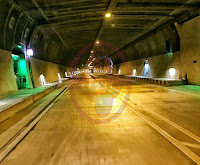 |
| Chenani Nashri Tunnel |
Our cab (Toyota Innova MUV) was very comfortable, we had no
trouble in sitting for hours and riding over the rocky roads. We passed through
many tunnels, which were quite dark and awesome at the same time. We also
crossed India’s longest road tunnel ‘Chenani
Nashri Tunnel’ between Udhampur and Ramban. The tunnel is approximately 9 km long. It was inaugurated very recently in
April 2017. It looked very new and the infrastructure
makes you feel as if you are driving in a foreign land. It was a comfortable
and smooth ride in that dark long stretched tunnel route and I felt a bit dozy.
Scenic beauty can be best enjoyed in the hill station. The different
colors of the Mother Earth are visible in Jammu and Kashmir. I started
documenting and noting down the name of the places that we were passing
through. I felt the Sun so soft in Ramban that falls on the way to Pahalgam in
Anantnag. These places are affected by landslides at any point in time,
especially when it rains.
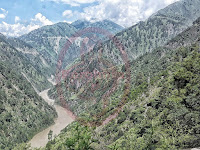 |
| Ramban |
The Beauty of Nature!!
The Sutlej River, one of the tributaries of River Chenab flowing extravagantly in the picture.
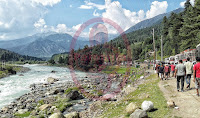 On the way to Pahalgam, there was a heavy traffic of the travelers and
devotees to the ‘Amarnath Pilgrimage’, as this was the Saawan Month in India
and most of the people follow the traditional vows to remain vegetarian for
over 30 days and also perform ‘Tirth Yatra’. Therefore our cab stopped at each checkpoint which were set up for the pilgrims’
convenience.
On the way to Pahalgam, there was a heavy traffic of the travelers and
devotees to the ‘Amarnath Pilgrimage’, as this was the Saawan Month in India
and most of the people follow the traditional vows to remain vegetarian for
over 30 days and also perform ‘Tirth Yatra’. Therefore our cab stopped at each checkpoint which were set up for the pilgrims’
convenience.
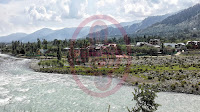 The Mattan Valley is a small village in the district of Anantnag. This place resembles the true and soulful brotherhood of the three
religion – Hindu, Muslim and Sikh. Anantnag was and is still actually known as
Islamabad by the locals. The Lidder River coming straight from Pahalgam is also
seen in the picture.
The Mattan Valley is a small village in the district of Anantnag. This place resembles the true and soulful brotherhood of the three
religion – Hindu, Muslim and Sikh. Anantnag was and is still actually known as
Islamabad by the locals. The Lidder River coming straight from Pahalgam is also
seen in the picture.
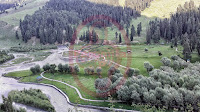 |
| Betaab Valley |
This is one of the shooting locations of a Bollywood movie named
‘Betaab’ in the early 80’s which starred Sunny Deol as his first movie. The
place is named after the movie as ‘Betaab Valley’. At present, the valley looked more of man-made place as compared to
the actual scenarios in the movie.
 |
| Chandanwari |
Witnessed the live snow clad (icebergs) in the mountains of
Chandanwari. Though we did not feel that cold as it was the Summer month in
Kashmir. These are the camps of the Amarnath Pilgrims, which were set up for about 40 days for them to take rest
on their way to the ‘Amarnath Tirth Yatra’.
There are summer resorts, picnic spots in abundance in Pahalgam
and its natural beauty have always
attracted the tourists and film-makers. The famous Bollywood Movie like ‘Karma’
in the 80’s starring Dilip Kumar, ‘Jab Tak
Hain Jaan of 2012 starring Shahrukh Khan,
‘Bajrangi Bhaijaan’ of 2015 starring Salman Khan was shot in the Aru Valley in
Pahalgam, it’s a beautiful location.
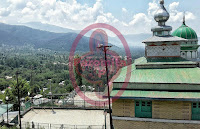 |
| Aishmuqam Dargah |
Bajrangi Bhaijaan’s Qawaali song sung by Adnan Sami was shot in ‘Aishmuqam Dargah’,
loved the place, it was so calm and peaceful, people were so kind over there
and you feel pulled towards the ambiance
of the Dargah premises. We climbed nearly 350 steps up the mountain to reach the dargah and didn’t even feel tired.
There are sweet outlets on both the sides
of the stairs while climbing the shrine. The movie depicts the story in
Pakistan, however, the shooting was based
in India in our beautiful ‘Valley of Shepherds’.
 The locals call Baisaran as
the ‘Mini Switzerland’ and we need to take the horse ride to view the beautiful
Kashmir Valley.
This one day wasn’t enough to capture all the bewildering
sights, however, it’s always a stupendous experience. Had a wonderful stay
at the Paradise Inn, where they served non-veg on
the menu, I’m being a true non-veg lover was delighted with the dinner. It was the
first non-veg in the list after my visit to J&K.
The locals call Baisaran as
the ‘Mini Switzerland’ and we need to take the horse ride to view the beautiful
Kashmir Valley.
This one day wasn’t enough to capture all the bewildering
sights, however, it’s always a stupendous experience. Had a wonderful stay
at the Paradise Inn, where they served non-veg on
the menu, I’m being a true non-veg lover was delighted with the dinner. It was the
first non-veg in the list after my visit to J&K.
Day 4: GULMARG
Our morning began a little late for Gulmarg, as we were bit
tired and slept for some more time in the morning. Breakfast was served in the
hotel by 9 am, so we finished eating, then started by 10 am on the way to our
next destination- Gulmarg. On the way, I saw the houses built of chipped paint,
old wooden blocks and windows which play their own part in making Kashmir even
more special and warm. The rooftops were painted with bright color, especially
they used green, blue and red. We passed
through a dense forest of pine and conifers, the leaves were wavering in the
wind.
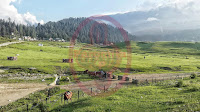 |
| Gulmarg |
A scenery of Gulmarg through my camera lens
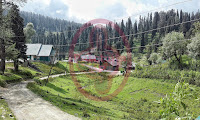 |
| Gulmarg |
A Spectacular morning view of the town, from outside our
hotel Khaleel Palace. Is there anything more beautiful than this, I felt like I
was in the seventh sky.
"When there's an infinite sky above you;
And wholesome greenery below you;
Also the mighty mountains around you;
Nature is calling you...
So spread your arms and hug them all."
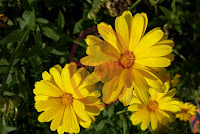 When you are in Gulmarg, you get the best of nature’s creation. The flowers are way beyond
their beauty, they shine under the soft sun and sparkle in the mist. The colors
look absolutely bright and beautiful grabbing your full attention towards them.
These flowers are the main attraction in the Gulmarg hills, there are 'meadows
of blue flowers' they are grown in every corner of the town. This is why
Gulmarg is literally known as the ‘Meadow
of Flowers’. An area under Lt.col.R.N.Chopra has meadows of all varieties of
flowers in and around its place. This one is from the quaint little day of the horse trekking to
the Gulmarg hills. We saw many gurgling rivulets and springs of water. There
were snow-capped mountain peaks situated
at some distance away. We also visited the only temple standing tall upon the
hill in the heart of the town.
When you are in Gulmarg, you get the best of nature’s creation. The flowers are way beyond
their beauty, they shine under the soft sun and sparkle in the mist. The colors
look absolutely bright and beautiful grabbing your full attention towards them.
These flowers are the main attraction in the Gulmarg hills, there are 'meadows
of blue flowers' they are grown in every corner of the town. This is why
Gulmarg is literally known as the ‘Meadow
of Flowers’. An area under Lt.col.R.N.Chopra has meadows of all varieties of
flowers in and around its place. This one is from the quaint little day of the horse trekking to
the Gulmarg hills. We saw many gurgling rivulets and springs of water. There
were snow-capped mountain peaks situated
at some distance away. We also visited the only temple standing tall upon the
hill in the heart of the town.
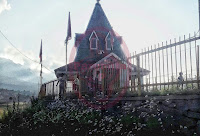 |
| Maharani Shiv Temple |
The pony ride brought us
to the Kangamdori (as said by the pony
master, I’m not sure of the spelling though), it is the first phase of the
Gondola. The Gondola rides were shut for few days because of an accident occurred
2 days ago, where the cables were broken. We moved to the Khilanmarg which is
the shooting location of a Hindi film song ‘Chahe Koi Mujhe Junglee kahe….Yahoo’ from the early 60’s.
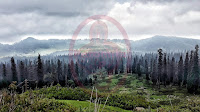 |
| Khilanmarg |
The pony ride took us near the Frozen Lake, where the water is
flowing straight down the mountain, melting from the frozen glaciers. It's damn cold, and interestingly the people
here bathe with this chilling cold water even in extremely cold weather, they also drink it directly. Our pony
master did mention that people out here don’t need any medicines because this serene water heals any bacterial infections
or other diseases too. We were amazed to see the people trusting the purity of
this water and we also filled two bottles for us
so that we could use it to heal any small infections after returning to our own
city. We borrowed the Kashmiri dress
which is called as Phiran and dressed for the photo shoot in the green
valley.
 I assemble those beautiful moments spent in Gulmarg with the
meal which was drool-worthy. This tomato
soup with croutons was just awesome for the weather and our appetite, it was
simple yet tasty.
I assemble those beautiful moments spent in Gulmarg with the
meal which was drool-worthy. This tomato
soup with croutons was just awesome for the weather and our appetite, it was
simple yet tasty.
Day 5: DAL LAKE
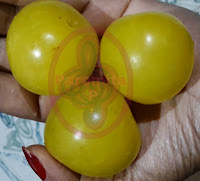 |
| Fresh Plums of Kashmir |
We reached Srinagar afternoon, as we stopped at few points on
our way from Gulmarg to Srinagar. We visited the ‘Apple Orchards’, the beautiful
valley in Tangmarg, a factory outlet showroom of Pashmina shawls and Dry Fruits
on the outskirts of Srinagar, from there we bought some saffron. While heading
to the capital city, we also saw the Fruit Market.
The markets are filled with
fresh fruits everywhere, especially fresh Plums, Apples and Apricots are in
abundance. This goes without saying even we bought few boxes of apples and also
took two big boxes of fresh Plums, which were very juicy, soft, sweet and
little sour. Few we ate during the journey and rest we brought back home.
We checked into a beautiful wooden carved and very well
furnished, a typical ancient architectural design of the Mughals, here stay at
the New Alexander Palace Houseboat. We got fresh and started for the ‘Shikara rides’. We
had some relaxing time in the shikhara
while watching the beautiful and mesmerizing life of Dal Lake.
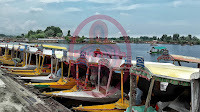 |
| Shikharas standing in a row in Dal Lake |
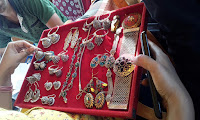 |
| On a Shikhara Shopping-spree!! |
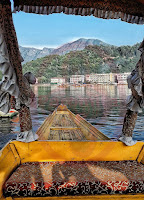 |
| Shikharas |
We enjoyed kulfi
and Kawah in the boat ride, our boater
mentioned that Kawah is a sweet beverage which is generally a type of green tea
made with lemon juice, cardamom, cinnamon, sugar or honey, sometimes they also mix
saffron and almonds or walnuts. It is usually served to the guests and also
given during marriage to the bride for the first time. People like to drink it
when it is hot.
 |
| Kawah |
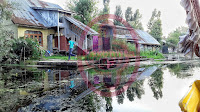 The Reflections of
Nature: the mirror image of the boy, trees,
and houses on the water!! The residents
of Dal Lake.
Natural mirrors
The Reflections of
Nature: the mirror image of the boy, trees,
and houses on the water!! The residents
of Dal Lake.
Natural mirrors
We spent some quality time around the houseboats and captured
the astounding views of the lake in the evening lights.
Nigeen lake is actually the backside of the Dal Lake. The timing for the sunrise and the sunset
were adjusted according to the tourist's
interest, as the day began too early around 5 am and ends very late about 8 pm.
So it gave us more hours to plan accordingly and visited the places in the
daylight.
Dinner was served quite early around 8 pm, it was an
unforgettable experience of our stay in the houseboat. A complete homely
feeling within the private wooden frame, with food,
that felt absolutely as the taste of home.
Day 6: SRINAGAR
Our day had begun with check-out from the houseboat on Dal Lake
and then check-in to hotel Druk on land just opposite to the lake. The entire
day was spent in the city sightseeing. Firstly we went to the Shankaracharya Temple where we had to climb up
about 400 steps. Photography was not allowed there, so we left our cameras and
phones in the car. However, I captured a
glimpse of the entire city from the top while driving back from the temple.
Secondly, we went to the Mughal Gardens. There are 4 Mughal
Gardens in Srinagar and also the Tulip Garden and the Botanical Garden.
The first garden on our list was Nishat Bagh. The beautiful
scenarios of nature’s creation arrest me here. An absolute delight to every
photographers’ lens.
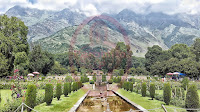 |
| Nishat Bagh |
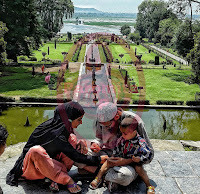 |
| A family spending their day in the Nishat Bagh |
Beautiful Flower and mesmerizing landscape at its background
The second garden was Shalimar Bagh, which is known to be the
largest Mughal Garden of all the gardens in India. A light colorful rainbow captured on my lens.
On our way, we dropped down at Asia’s largest Tulip garden
and also the Botanical garden. The Tulip garden showed very few flowers at this
time, and they say April is the best time to visit, as tulips are grown in full
bloom in April.
The fifth garden was the Chashme Shahi, which has the spring
water channel on the terraced formation architecture.
The last garden was the Pari Mahal, from where we get the
panoramic view of the whole Srinagar city. Even this was designed in the
terrace formation. These flowers are from the Mughal Gardens.
As you walk through these gardens, you walk endlessly, extra mile, they are marvelous, huge, staggering
into your eye shots. These are an amazing
art of nature. The day looked very bright
and colorful, the Sun was at its peak brightness. Even though the sun was
blazing fiercely at me, nothing stopped me from enjoying the beauty of the
paradise. Instead of salubrious weather and pristine environment, it was the
scorching heat that welcomed us. July turned out to be the cruelest month even
on the hills. However, the picturesque
and lush landscape was worth our visit.
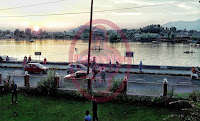 |
| The sunset view in the paradise city. |
The beautiful thing about this city is that there is a slow and
silent transition taking place at every corner of the street. It was merely the
transition of fear to the existence of harmony in the heart. These places are
worst affected by violence, hatred, and
unrest, but people still tend to maintain an aura of love and emotion of
attachment. Even though serenity is
ruined and clashes occur, yet we find the most peaceful natural attributes,
tranquility and scenic pleasures in this city. I loved this place and I would
love to visit again in the winter.
Day 7: KARGIL
This day we began very
early around 6 in the morning, as we had to cross the Zojila pass before 12
noon. So our driver was driving a bit faster and as we rolled I was ready with
my camera to record the spectacular views from the car itself. However there
were few obstacles falling on our way as the route we headed for Sonamarg was
closed because of ministerial issues regarding the ‘Amarnath Pilgrimage’, so we
had to return back and take another
route. Then again military officials stopped all the cars at the check post of
the ‘Amarnath Tirth Yatra’. Fortunately,
they stopped us only for 10 minutes unlike the other travelers, and we left
from there quickly.
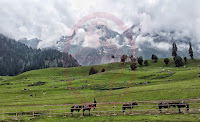 |
| Thajiwas Glacier |
On the way en route
Sonamarg, we got down on some eateries, had hot tea, pakoras, and bhajiyas, which
was absolutely perfect for the cloudy weather. We reached the meadows of Gold –
Sonamarg, where the horse ride was a must to catch the astonishing ‘Thajiwas
Glacier’ the ice-capped mountains looked
amazingly gorgeous and from here onwards we started feeling colder. It is so
much true as said by Amir Khusru that ‘If there is a Heaven on Earth, it's here, it's
here! Haminasto! Haminasto!!
It's truly Incredible! It's purely Magical; Exceptionally A Paradise on Earth.
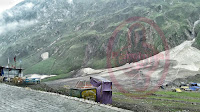 |
| Zoji la |
We stopped at the Zero point (Zoji la) on our way to Kargil,
where it also began raining heavily. So we had to stop there until the rain
slowed down. My favorite Maggi accompanied me there and also we had some snacks
and tea. Surprisingly there were few guys at the pass selling shawls and other
dress materials at that chilling cold mountain area, so we did a bit of
shopping too. The place was almost freezing because of rains and I was
shivering badly, but purposely I did not want to wear woolen to feel the cool
weather. The place was a strikingly perfect combination of ice and rains.
I was astonished by the bike life in this
high mountain chain, people are so lively, energetic, fearlessly
enthralled with their rides on these dangerous, deadliest, rocky barren mountains, but it's definitely the most beautiful experience. I met a guy from Germany, who rode a bicycle
straight from Lucknow to Kashmir. It creates great enthusiasm in them to kill
the fear out from their heart and ride in the fresh air and to live in freedom.
But when I was driving in the huge mountains with the immense edges by my side,
peeping through the glass panes wondering as to where’s the land deep down
there? I was thrilled as well as enchanted.
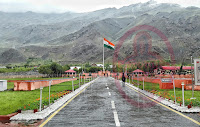 |
| The Kargil War Memorial |
I feel very proud to visit this place ( The Kargil War Memorial) just before the ‘Kargil
Diwas’ (on 26 July) and ‘Independence Day’ (on 15 August). ‘The Kargil War’ is
an epic event created in the history of India. I pay my tribute to the great
heroes for their bravery and to save our motherland.
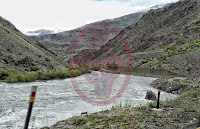 |
| Neelum river |
This is the Neel river which meets the Line of Control
(LOC) and it goes straight to Pakistan.
We happened to reach
Kargil by late in the afternoon and the entire day was cloudy or since it is
one of the coldest habitats could be that
the weather seems to be always cloudy.
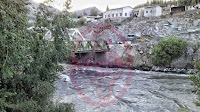 |
| Suru River |
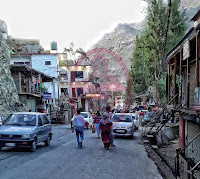 |
| Kargil Main Market |
The loquacious River Suru one of the
tributaries of the mighty Indus river. There are houses built of mud and rocks
along the hillsides. The main market in
Kargil where the shops are located adjacently at the long stretched route along
the mountain on one side and the Suru
river at the other side.
And the food journey also continued alongside with the travel.
The Hotel D’ Zojila maintained the low-fat foods in the meal, because Dras which
is the main town in Kargil, is the coldest
inhabitant in India and also the second coldest in the world, hence the food
habits are very obvious to be maintained keeping in view the heart and pulse
rate, heart pump, blood flow,
frozen nerves or nerve-wracking. So people here usually prefer on boiled or
steamed foods.
 The breakfast scene at Kargil was low-calorie content, as this plate shows the aloo ka paratha, upma, omelet, and chole are
all prepared with either less oil or without oil. The travelers were instructed
not to eat heavy meals during the journey in the rocky and curvy mountain path, which were often faced with bumps in the road
and they become the reason for nausea in the trip. We avoided fatty foods like
chips and preferred to eat mainly biscuits, apples, boiled eggs, so our journey
was not that troublesome.
The breakfast scene at Kargil was low-calorie content, as this plate shows the aloo ka paratha, upma, omelet, and chole are
all prepared with either less oil or without oil. The travelers were instructed
not to eat heavy meals during the journey in the rocky and curvy mountain path, which were often faced with bumps in the road
and they become the reason for nausea in the trip. We avoided fatty foods like
chips and preferred to eat mainly biscuits, apples, boiled eggs, so our journey
was not that troublesome.
It was a heavenly experience in Dras,
where the temperature was nearly freezing below 6°C. Sometimes I also felt my
palms getting numb, but the hotels provided room warmer which was cozy and we got a sound sleep at night to start the next
day.
Day 8: LEH-LADAKH
 |
| Mulbek |
Starting at 9 in the morning to drive distances at the long stretched
routes to reach our next destination. We stopped at each and every locations
falling on our way to Ladakh.
The first was the ‘Mulbek’ from the Chamba
Monastery, where a huge idol of Buddha is sculpted along the mountain height.
Then we headed to the ‘Namika la’ top, which was
nearly 12200 feet above the sea level, the views gave an astonishing
vista to the traveler's lens, the place
was bewildering and we had some marvelous
photo session with an immovable bike being displayed there for the traveler’s fantasy and enjoyment. Our car began to
accelerate up to the high mountain, we drove to the wafts of cool and soothing
breeze.
The next stop was ‘Fotula’ Top, which is at an altitude of approx 13500
feet high, it is known to be the highest point on
the Srinagar-Leh road which falls on the National Highway 1. The place was very
breezy, the colorful flags were eye-catching and mountains stole the show as
usual.
We headed to the ‘Lamayuru Monastery’, which is one of the oldest and
largest Gompas (Monastery) in Ladakh from
the 11th century.
These wheels have the mantras written on it ‘Om
Mani Padme Hum’, it is believed that when you spin these wheels, it reduces the
stress out of your mind and gives you peace from within.
The place (Lamayuru) is often
known as the ‘Moonland Hill’. Ladakh has the most living areas for the monks at
Gompa, and Lamayuru is one of the gems of all the monasteries in India. When it
comes to food, momos are the best option
in the mountains, so we grabbed a plateful of momos from hotel Niranjana, which
is managed and owned by the Lamayuru Monastery.
We passed through the Khaltsi
Gompa, where we clicked some road photography. The Likir route was the best of
all the road photography shows we enjoyed, I found this place the most
mesmerizing and excerpt of my dreams. We did some road shows on the ‘Magnetic
Hill’, which is famous for its motorbike sports
adventure, as the vehicle moves with the speed of the magnetic force.
Ladakh or it is most often also known as the ‘little Tibet of
India’, has a fantastic landscape with the Himalayan chains all around. While
driving on the NH1 connecting Srinagar and Leh we get to witness the
unbelievable Confluence of Indus and Zanskar rivers at the Nimmu Village. Both
the rivers meet distinctly and can be easily recognizable. The greener is the
Indus river to the left and the lighter toned shining blue river is the Zanskar
approaching from the right direction.
The colors are more prominent during
Spring, but in the month of July, it
looks muddy. A 14 km stretch of Indus river in the upstream direction ending at
this confluence is popular for rafting. The Indus originates in the Chang Thang
cold desert and the Zanskar river originates in the Zanskar ranges. Both these
Himalayan rivers join at a scenic view in Ladakh at this confluence.
As of now the maintenance of these roadways and its surroundings
were under the ‘Vijayak Project’ of Border Roads Organisation, but as we
entered the Leh city from the airport onwards it comes under the ‘Himank
Project’.
It was the most adventure kind of day and finally, after a long road show on our way to
Ladakh, we reached there just before the dusk. Hotel Holiday Ladakh greeted us
by an overwhelming white scarf around our
neck saying ‘Jullay’, meaning welcome or Namaskar
by the Lamas/Buddhists in Ladakh.
We went to the Leh Main market. The
lights were on in the market and we were
on a shopping spree at one of the highest markets of India.
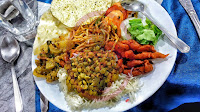
Dinner scenes, I was damn hungry after the whole day’s
journey, so just grabbed everything on my plate to sit and eat peacefully in my
place. The journey of my food stories shall also be alive in my memories along with the traveling moments.
Day 9: NUBRA
Today on our cab was Xylo MUV with a new driver-cum-guide
to accompany and take us to new adventurous ride, because Srinagar number board cars do not run on these routes. We usually used to start off
early in the morning for our next destination, so that we could comfortably
cover the distances of about 7 hours daily. The hotels packed most of our
breakfast meal to eat while on the go. This was great in terms of hospitality
as they understood the needs of the travelers. Since the distance from Leh to
Nubra was to be covered in fewer hours,
we had some time to finish our breakfast in the hotel.
This was our morning
meal at Leh. It offered varieties in the breakfast menu keeping in view to
the choice of all the travelers. I was clueless as what I need to eat, so I
took everything on my plate, but I could eat only bread and butter, then
distributed the rest to my family. I was enjoying the food and the drive to the
fullest.
We got an incredible view of Leh from up above the Ladakh
Mountain Ranges. I captured the beautiful shots of the town. In this pic: A
Stadium is in construction; the Zanskar Mountain Range standing tall far straight; the Shanti Stupa lies on the
right side; the Leh Palace and the Tsemo Castle above it at the left; the Stok
Kangri standing on both the ends. I gathered a head
lot of information. Travelling is all about learning and discovering new
things. We were driving towards the world’s Highest Motorable Pass, which is
the gateway to the Shyok and Nubra Valley.
We reached the ‘Khardungla’ pass,
where there was a crowd of people and also people walked over a blanket of ice. Khardung la has a lot of controversies as if it’s the world’s
highest motorable pass or not, and people were getting crazy to click their
photos on the milestone.
I too have a photograph clicked on that milestone with
a gang of strangers, however, none seemed to be unknown there as we enjoyed the
scenic pleasures together. I calmly happen to write my name on the bed of snow with a message-
“I’m top of this beautiful world
With my name written on the ice high above the ground on the
mountain floor
I see this as in my dreams, but when I wake up it was the
reality
I find my name written like that on my return to that place next
day
Oh heaven, take me there,
as I want to see if my name’s still written there.”
When you are traveling
from Khardung la, the Sun is at its peak, the Sun burns you, the icy cold numbs you, but the view spellbinds you and the ride accomplishes you. It is very important to carry sun protective
moisturizing lotion/cream.
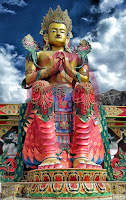 |
| Diskit Monastery |
Passing through the Khardung Valley, Siachen
Stallions, Khalsar, the Shyok Valley, around 3 in the afternoon we reached the
Diskit Monastery, where we found the most magnificent eye vista of the 32 meters tall statue of the Majestic Maitreya
Crowned Buddha. I’ve seen a lot of photographs of this place, this is one of my
perspectives. But believe me, these are
nothing of what the place is actually like. A camera can never do justice to
this place, one needs to come here to
witness the true vision of this horizon.
“Now I’m a part of Nature’s
Painting.
I’m framed along the colors of Nature.
Nature is bestowed in me.
I’m lucky to step my feet upon the heaven.
My soul feels blessed to
witness this Nature.
I’m in love with this Nature.”
We went to the camp for check-in and kept our luggage, where this was our welcome treat at the camp after the long- long journey.
Then we headed to the Hunder Village in Nubra Valley, where it was a wondrous meeting of the mountains, water, blue
sky, clouds, the two-humped camel called
a Bactrian, white sand dunes and the
white desert. I could recall that once in my school days I had learned about the ‘cold desert’ of the world is
in our country, and I’ve been fortunate enough to visit the place in my life. A
few more kilometers from this valley will take you to the Pakistan Border. This
valley is very close to the Siachen, and the Nubra river actually originates
from the Siachen glaciers.
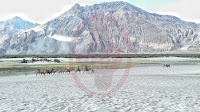 |
| Nubra Valley |
This picture shows as if the reminiscent of trader’s
caravan walking on the silk route.
A herd of pashmina goats came along our way,
we get the famous pashmina shawls made from the fine fiber of these goats.
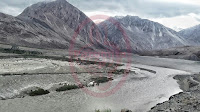 |
| Shyok river |
This is the Shyok river which means the ‘river of sorrows’, one
cannot very easily distinguish between the desert and the riverbed in that valley, because the muddy sand
has been mixed along with the river water, so both look similar, sometimes it's even the ripples of the water and the
dunes look same. Only at times when it is very windy,
the water flows can be seen moving faster.
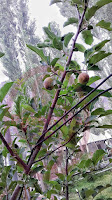
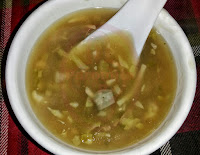 Our stay at the Nubra Camp was completely a different experience
altogether. I captured beautiful flowers and the tiny apples in the daylight.
Then, living the night under the clear sky with stars shining brightly, we also
had a music gala with campfire until late night. I loved the soups served in the meals in every hotel, it
actually helped the appetite to revive. The soup was essential for the diet at the beginning of every meal. Every hotel made it compulsory to serve soup at
the beginning of meal for the travelers. We had survived on fruits/quick snacks
and tea/water in the daytime, where it took 8-9 hours of traveling each day to
reach our next destination. So we ate the main course meal only at night.
Usually, the hotels served dinner before 9 pm, so that we could finish our
meals and start early the next morning. And that hunger moment after the whole
day’s journey, the soup was just a heavenly bliss to start the heavy meal after
the day’s void tummy. The long road journey did not make us feel hungry though
while we were traveling. So here’s a little pledge to start the diet on a
lighter note to the heavy meal on a travelers’ list.
Our stay at the Nubra Camp was completely a different experience
altogether. I captured beautiful flowers and the tiny apples in the daylight.
Then, living the night under the clear sky with stars shining brightly, we also
had a music gala with campfire until late night. I loved the soups served in the meals in every hotel, it
actually helped the appetite to revive. The soup was essential for the diet at the beginning of every meal. Every hotel made it compulsory to serve soup at
the beginning of meal for the travelers. We had survived on fruits/quick snacks
and tea/water in the daytime, where it took 8-9 hours of traveling each day to
reach our next destination. So we ate the main course meal only at night.
Usually, the hotels served dinner before 9 pm, so that we could finish our
meals and start early the next morning. And that hunger moment after the whole
day’s journey, the soup was just a heavenly bliss to start the heavy meal after
the day’s void tummy. The long road journey did not make us feel hungry though
while we were traveling. So here’s a little pledge to start the diet on a
lighter note to the heavy meal on a travelers’ list.
Day 10: PANGONG TSO
The beginning of a new day and a new destination. The morning
scenery with a clear blue sky above us. We started off very early as we had to
cover a distance of 10 hours, as the main route to Pangong from Nubra (which
was shorter of approx 5 hours) was closed due
to natural calamity. So we had to return back to Leh, then stretch a long route
from the Chang Thang valley. The route to Pangong was quite painful as most of
the part was non-concrete, stony path and the moment we saw a black patch after
driving many kilometers on a raw, rocky, gravel road, we heaved a sigh of
relief. This day we rolled on the way non-stop as we wanted to reach the
enchanting Pangong before the sunset, however,
I was ready with my camera all the time from within the glass panes.
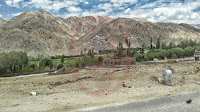 |
| Chemday Monastery |
I caught
everything that was interesting in my cameras
such as the ‘Chemday Monastery’ up on the hillside, the zig-zag or Z-shaped pattern
road on the mountain near Zingral. One of the best things while driving on the
roads of Ladakh is the quotes written on the milestones or direction sign
boards by BRO (Border Roads Organisation), it reflects at every twist and turns
on the way and when you read them, it seems to give us motivation on our drive.
Zingral Milestone
Our car stopped at the ‘Changla’, which is known to be one of the
highest motorable passes, again faced with a lot
of controversies as to if it is either the first or second or third highest
pass.
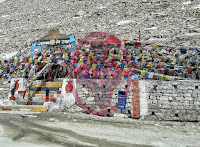
There was a temple in the middle of the pass named ‘Changla Baba Dev
Sthal’ and the prayer flags did give a lesson to remember, as a mark of
accomplishment and in reference to the Buddhist Monks prayer flags are put up at every location in Leh-Ladakh, with the hope that the
wind will carry the mantras written on the prayer flags out to everyone and
promote peace, love, compassion, strength,
and wisdom. On the contrary to this belief, prayer flags are not supposed to
carry prayers to the God and the flags’ faded colors are considered as
auspicious, which signifies that the prayers were successfully carried by the
wind and it spread goodwill into all the
pervading space and also to the people. Our cab passed through the Tangtse
Valley, Tsultak Bridge, Changthang Wildlife Sanctuary, Durbuk Village, and some
more names in my diary.
While passing through Changthang en
route Pangong Tso, we found wildlife habitat in plenty, especially the
huge rodents ‘Marmots’, which are actually squirrels and locals call it ‘phea’. Our driver said its name as ‘Lukhiya’, as what I’ve noted in my records.
Marmots are found in abundance in this region, and we were crazily waiting for
them to come out from below the ground. There are thousands of holes in that
area where the marmots keep going on and off the ground.
We would need to pay separately for the 'Pass Permit forms' for the entry to Nubra and Pangong because both these places are non-accessible and are under the military sections.
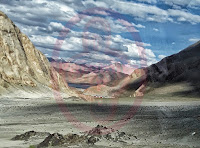 |
| First view of the world famous ‘Pangong Tso |
And we were patiently driving at the long stretch mountainous roadway, we couldn’t find even the first glance
of the lake. Our car kept moving and moving, and the sun was almost going to
set down, hiding behind the mountains. After a very long drive, our wait was
accomplished as soon as we saw the first view of the world famous ‘Pangong
Tso’. Reached to our camp after 5 in the evening, but the day was still bright
enough almost for 2 hours more. We were astonished, the scenery took my breath
away and the breeze drove my senses numb as if I was flying high letting myself
free in the air.
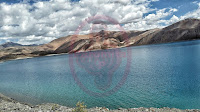 |
| Pangong Tso |
The place was peaceful, away from the crowd and the
hustle-bustle of the city life and the honks of the vehicles. Nature was at its
best performance and I was a silent spectator and the marvelous shots simply turn you speechless. The cobalt blue sky, the
pearly white clouds, the mighty Himalayas, the grassland, and the desert land
giving the lake camouflaging effect from everywhere. The mystical breeze smoothly moved
the clouds above and water below, sunlight peeped through the cottony mass and
the magnificent Himalayas stole the show in the background.
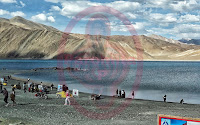 |
| '3 Idiots' movie location |
We had the most
mischievous photography session at the spot of the famous Bollywood movie ‘3
Idiots’ shooting location. We could also see the borderline mountain from where
our neighboring country China would begin. Then slowly the 200 km long saltwater
lake changed its color into sparkling silver, as the stars made a roof over it. The night turned colder and I was
pleased to spend the night under the sky full of stars, a graceful lake in front and the solitary
mountains all around.
In this chain of mountains, the mountain that is visible at the center of this picture is actually the China border, therefore, on crossing that mountain we would step into our neighboring country.
Day 11: LEH CITY TOUR
Our morning began quite late, as we wanted to spend some more
time in that mesmerizing location, in the Pangong. We had our breakfast with
the most wonderful horizon of the earth. The sunrise as viewed from Pangong was exquisite as if thousands of golden sparks were
bursting into flames and radiating fiery colors throughout the sky and into the
glistening lake, it was purely magical. Then we headed back for the city
sightseeing in Leh, on the way we witnessed the striking views, the Bikers
life and the Summer life of Ladakh. Our driver-cum-guide said that Leh and
Ladakh are actually the same places, the
locals call it as Leh and the tourists say it as Ladakh, whereas I got to know
that Leh is actually a big town in Ladakh.
These are the structure or the
Stupas built from the ancient time by the kings who ruled these places, these
are white painted, inside them are the written mantras/chants that people
worship Gods by walking around the dome three times in a day.
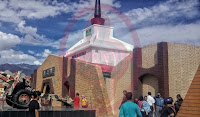 |
| Hall of Fame |
Around 4 pm, we reached the ‘Hall of Fame’, it is a museum where
you get to see the complete historical, geographical features of Ladakh, also
the memory, sacrifice, achievements of the Indian Army. As it is the most
famous tourist spot, it is necessary to have a cost for its maintenance and we didn’t mind to pay Rs.25
entry fee plus Rs.50 for photography in the inner premises. The Hall of Fame
and the Kargil War Memorial are important for the tourists to visit so that we could understand how the Army
is guarding the nation to keep us safe from our enemies attack. I felt a lot
more patriotic at both these locations and felt proud to at least visit and pay tribute to our national
heroes. You get all the important information of Jammu and Kashmir under this
roof, but to explore these things physically it's
mandatory to visit the places and noting down the unknown facts.
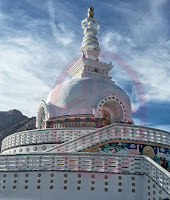 |
| Shanti Stupa |
Then again the fun time began on our next location at the
‘Shanti Stupa’, even this is the most visited tourist attraction in Ladakh. It
is a paradise for every photographer’s lens and it gives an extra mile overlooking
to the whole Leh city. It is so peaceful that you feel your worries paved a way
out for yourself. If you want to get the panoramic views of the entire Leh
city, this place gives the superb angles to the focus of your lens. The hilltop
location was spectacular, the place is intensely spiritual.
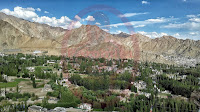 |
| Leh City |
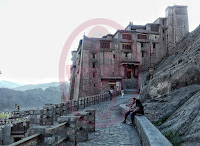 |
| Leh Palace |
Our next spot was the ‘Leh Palace’, it’s a piece of history,
beautiful architecture which holds the heritage of the royal family in Leh. As
we happened to be the last visitors, and the place shuts for the tourists as
the sun sets, they allowed us to go without the entry ticket, as the ticket
counter was already closed. It was around 6:40 pm then, but the sun was still
shining bright and we enjoyed to the fullest up to
the last level, ie the topmost terrace of
the palace. It was like an exciting adventure game as if we played hide and seek or a
computer game with every level that we climbed up we win. I simply loved climbing up the narrow wooden staircases in the darkness and hunting to escape into the light. It was a different experience along the brilliant construction of the
palace inside.
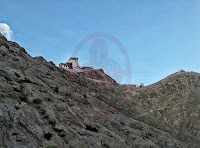 |
| Namgyal Tsemo Monastery |
Then upon the same hill, there lies another castle named
‘Namgyal Tsemo Monastery’ also said to be the ‘Victory Tower’ sometimes. Since
there was no vehicle route to reach that
place and we had to climb nearly 300 steps, and it was already dusk and we were
damn tired, even though we had the zeal to go, but the elderly members said no.
However, I tried to click a portion of it
from below.
In Ladakh most of the places name ends with ‘La’, that’s why
‘La’dakh is known to be called as ‘the
land of passes’. ‘LA’ means 'pass' by the people of Leh-Ladakh. So I got in my
diary list Zojila, Namikala, Fotula, Khardungla, Changla and much more.
Finally, spending the last night in Ladakh, Jammu and Kashmir. We packed all our luggage to leave from there forever, and the
last dinner was served at the Hotel Holiday Ladakh was delicious and we were delighted with their service. The place was excellent,
would love to stay there if we visit again.
I wish the time to stop here and there shall not be an end to this journey.
Day 12: LEH AIRPORT
The most memorable and life-changing
trip was coming to an end. I’m proud to visit these places which show a deep
connection to landscapes, history,
culture, patriotism, ancient architecture, and what not. There is no other
place in the world that is blessed with so many things. I’ve been to many
places but none could match the love what the Kashmiris
share with the tourists. My journey to Jammu and Kashmir is an unforgettable
experience of my life, with a successful trek over the mountains and exploring the flora
and fauna.
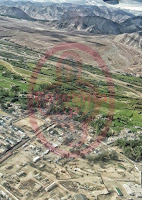 |
| Leh Airport |
I could still continue the hangover
by capturing hundreds of shots even after our flight took off. I got the most beautiful scenic panorama through the glass panes, the endless chains of the Himalayan mountains, the ice-capped regions, thin line of the rivers
that was visible from the dense white clouds.
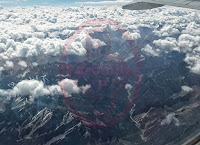 As if I was walking on the clouds
high above the earth. It was mesmerizing, unbelievable and it was a flight to
remember. It was the most fun-filled, weird, marvelous, dangerous, adventurous,
beautiful, mind-blowing, and craziest traveling
experience. Finally, we reached home by
the evening with all the scenery in our eyes and memories in our heart.
As if I was walking on the clouds
high above the earth. It was mesmerizing, unbelievable and it was a flight to
remember. It was the most fun-filled, weird, marvelous, dangerous, adventurous,
beautiful, mind-blowing, and craziest traveling
experience. Finally, we reached home by
the evening with all the scenery in our eyes and memories in our heart.
I shared the complete story of my journey, this was an awesome tour of my life and I expect more to follow on my list. It was a
travel of a lifetime. Now I miss the ecstasies of the travel and retrieve them in my
dreams.
This is surely not the end of this World; there's another part of the world waiting for me to explore!!
Author: Paromita Pramanick
Find other Travel Stories on this blog-->> My first visit to the North-East; MAYAPUR BHRAMAN
Paromita Pramanick ©2017. All Rights Reserved.
